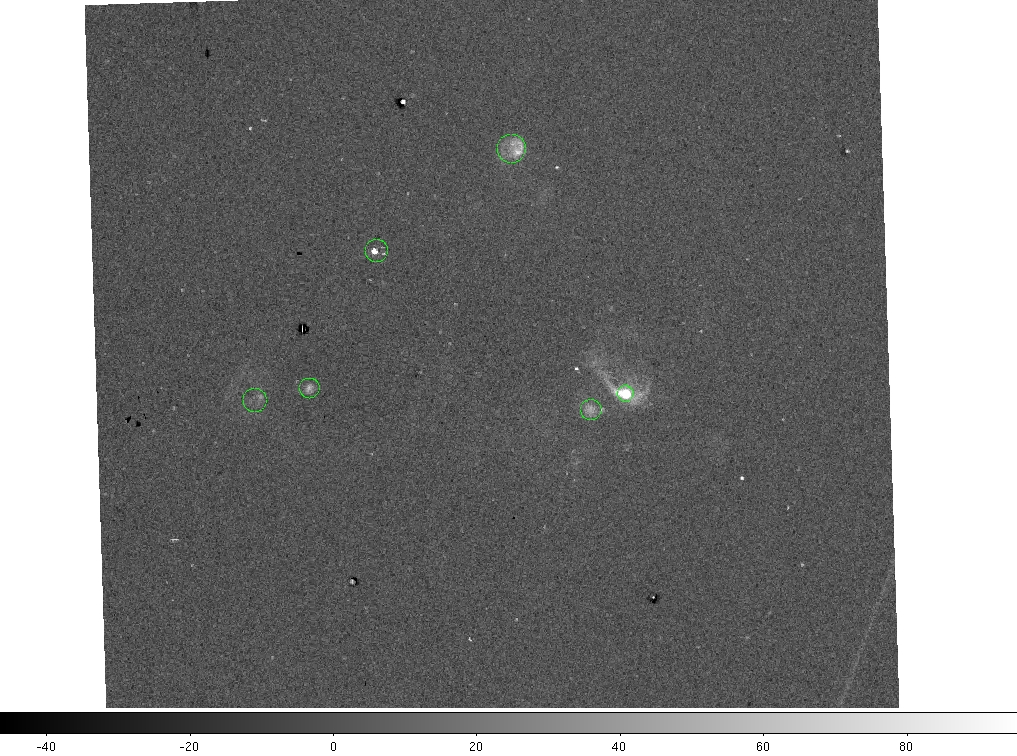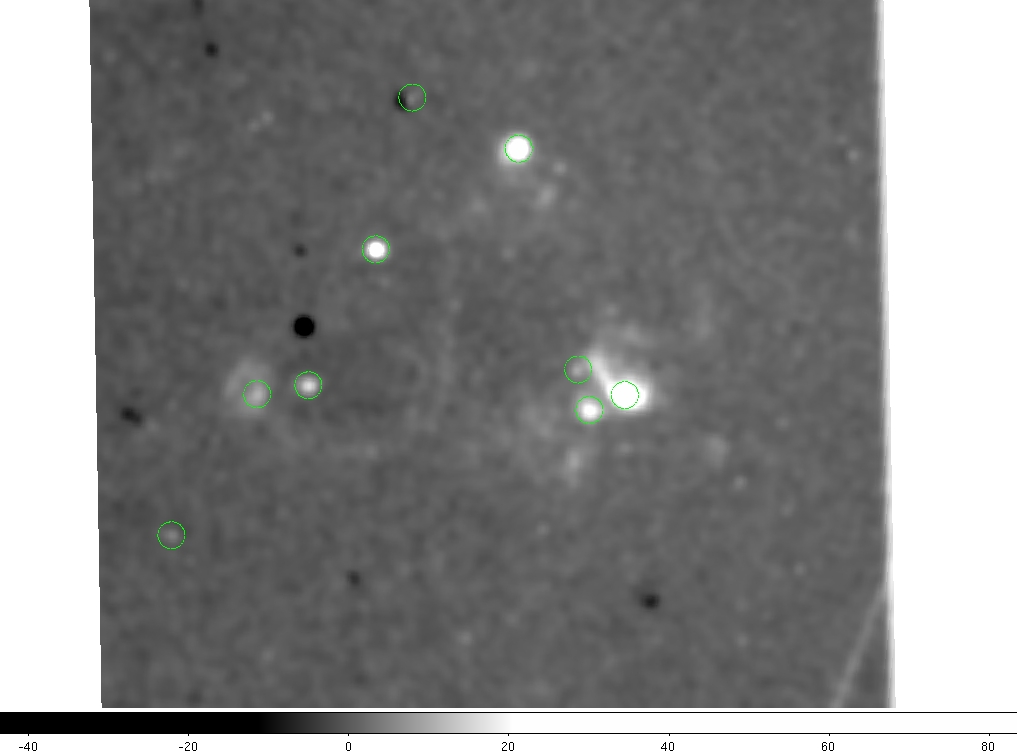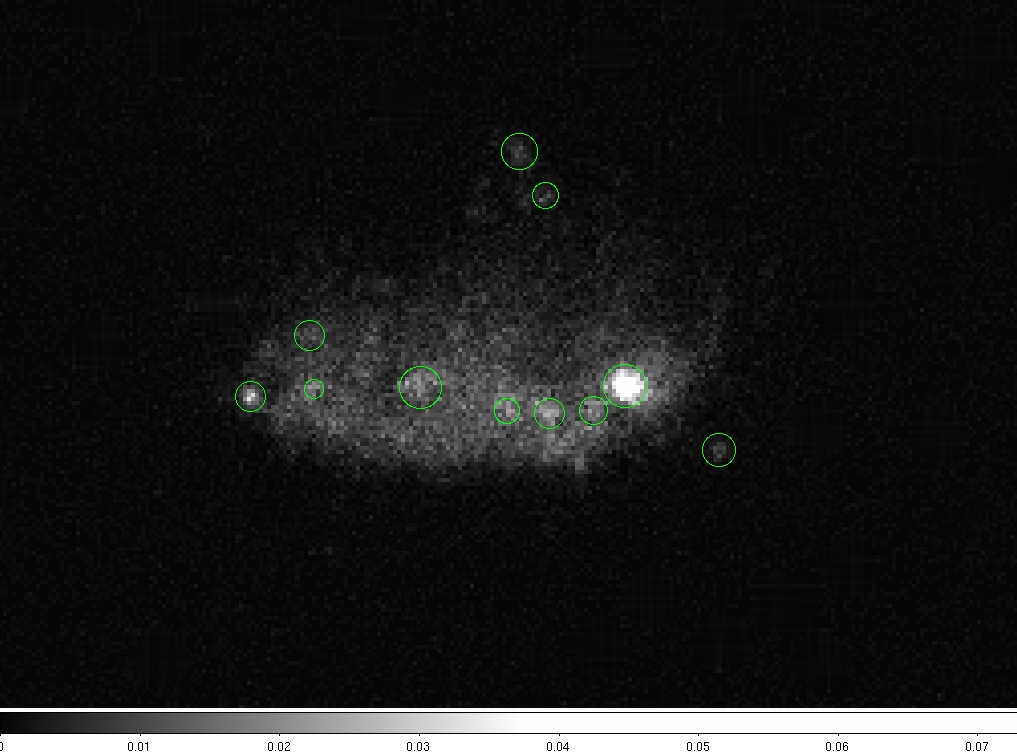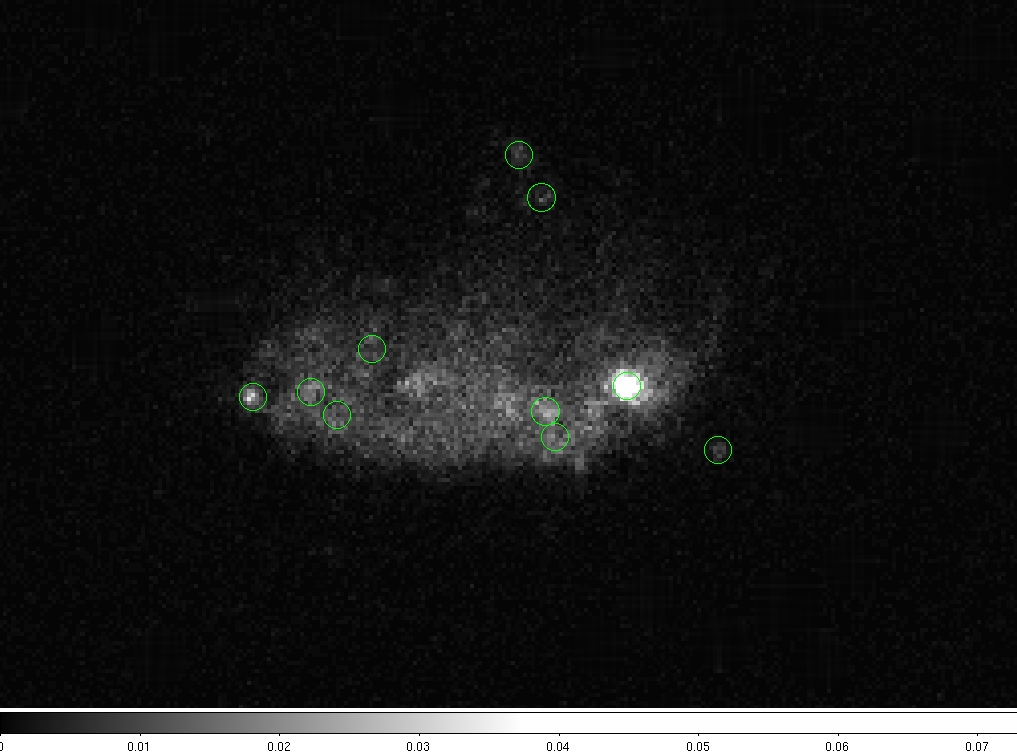Weekly Meeting
11/11/2013
Jester 2005
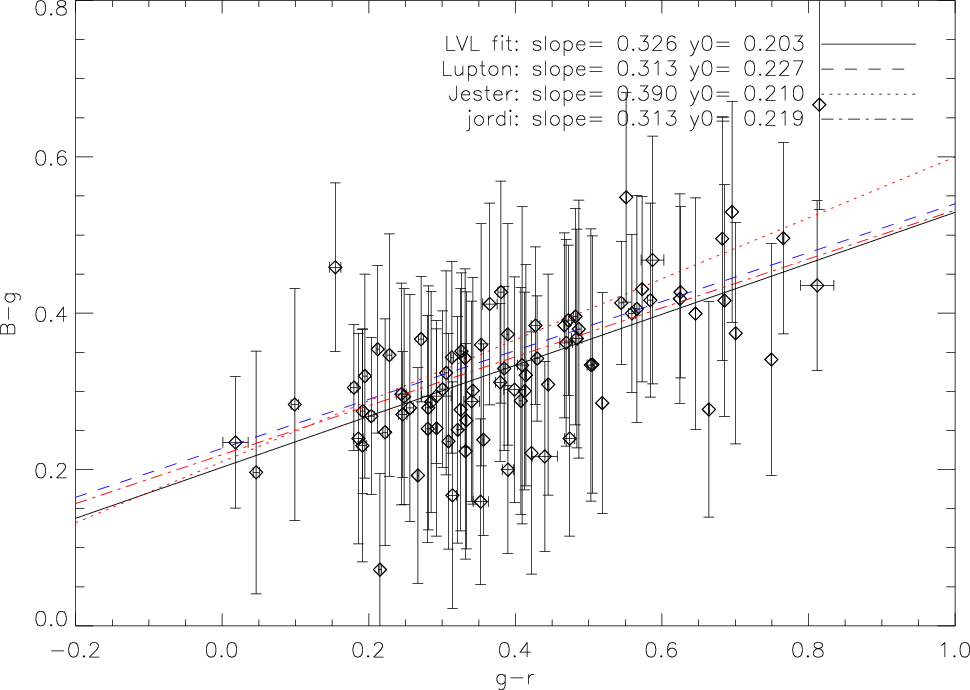 |
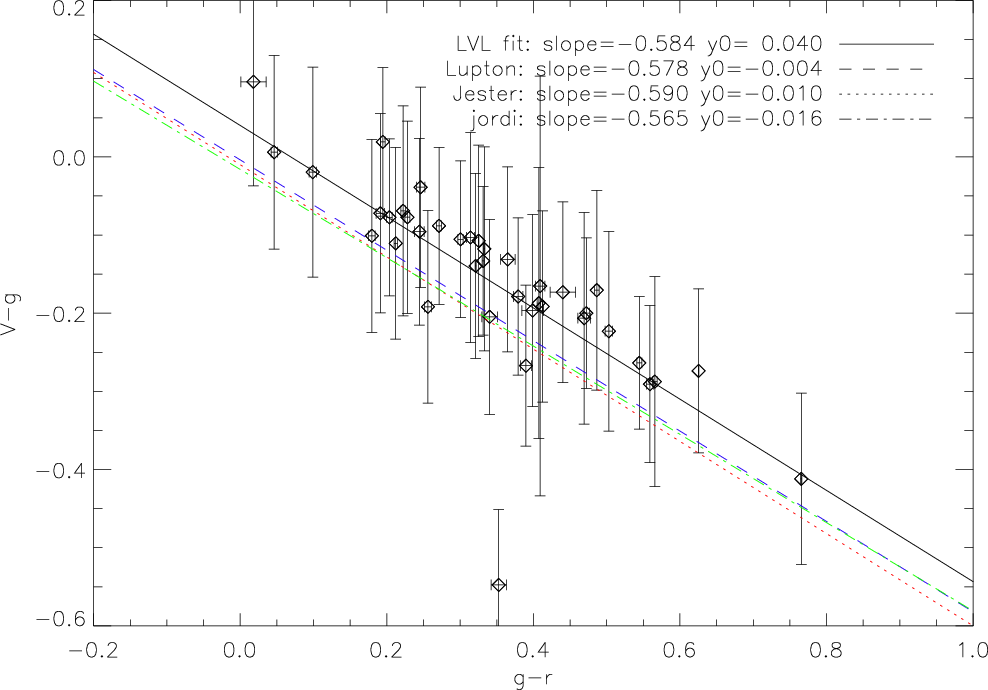 |
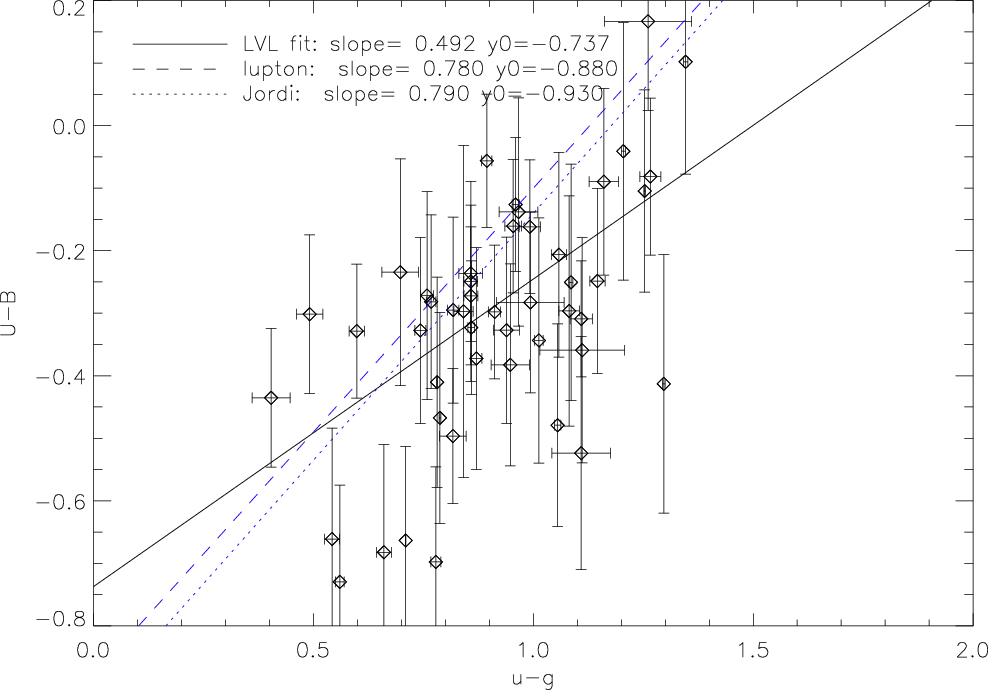 |
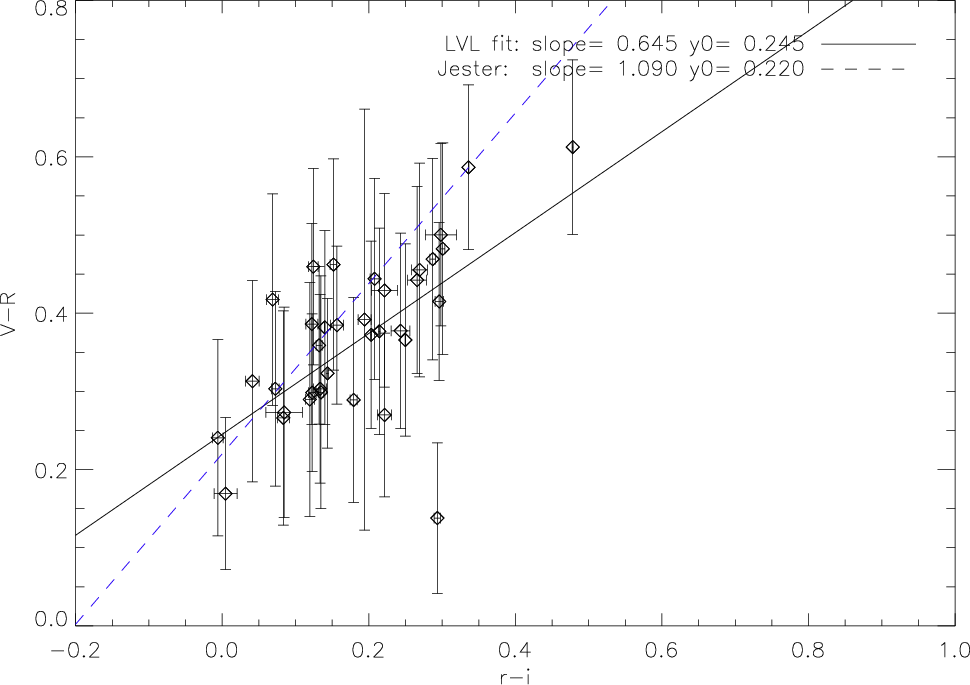 |
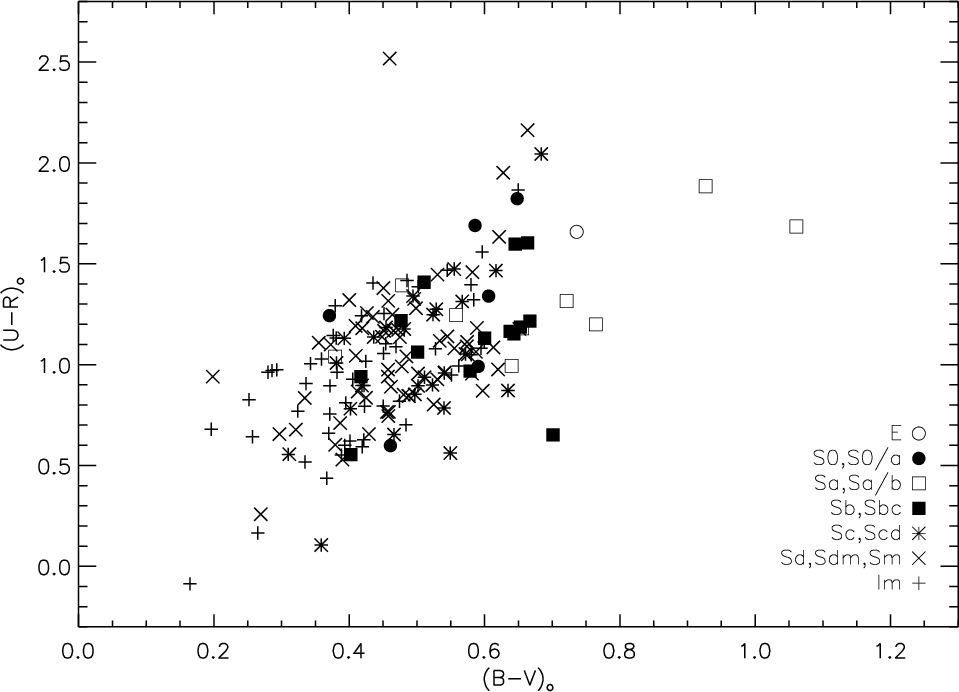 |
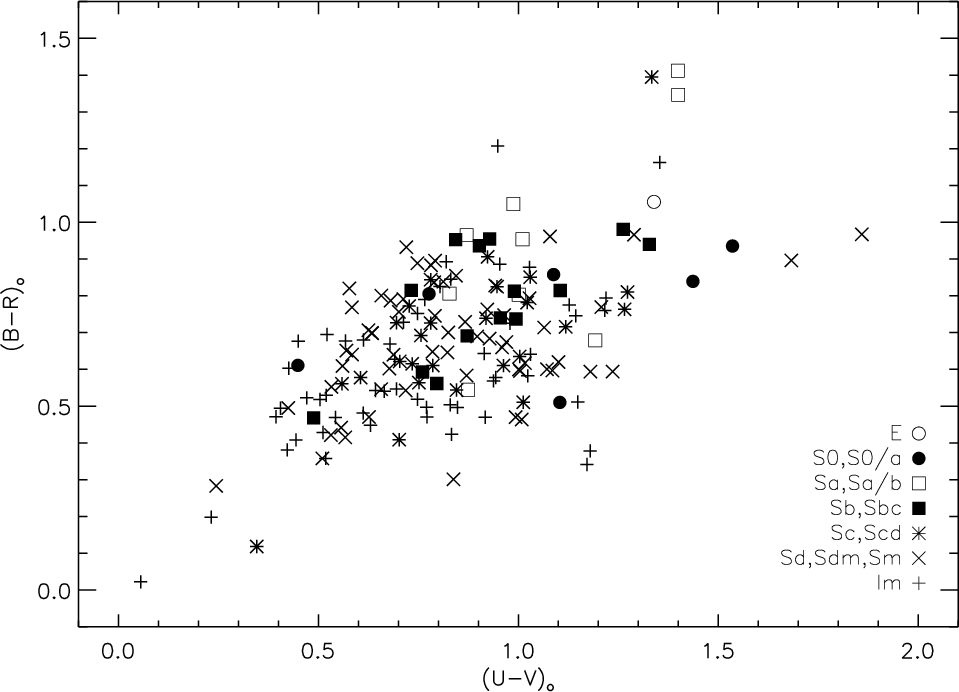 |
Jordi 2005
 |
 |
 |
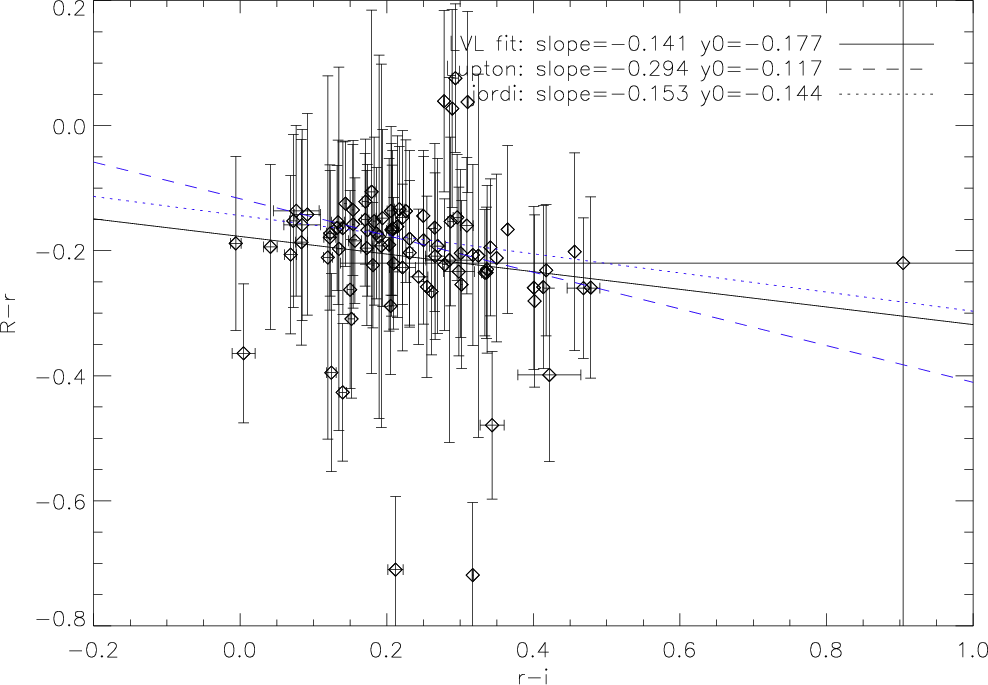 |
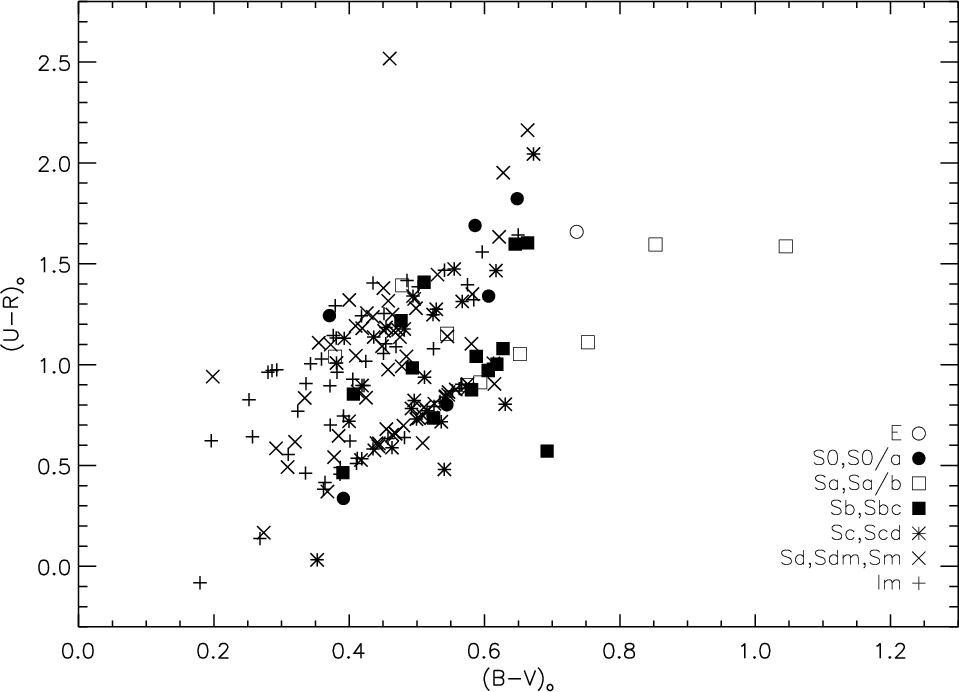 |
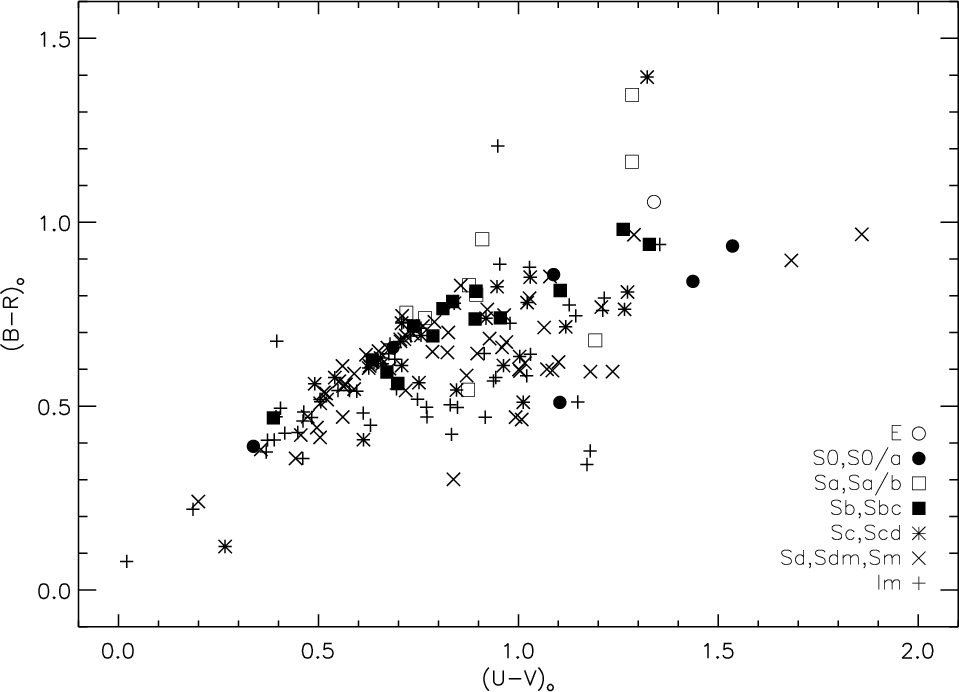 |
Dave 2014;in prep :)
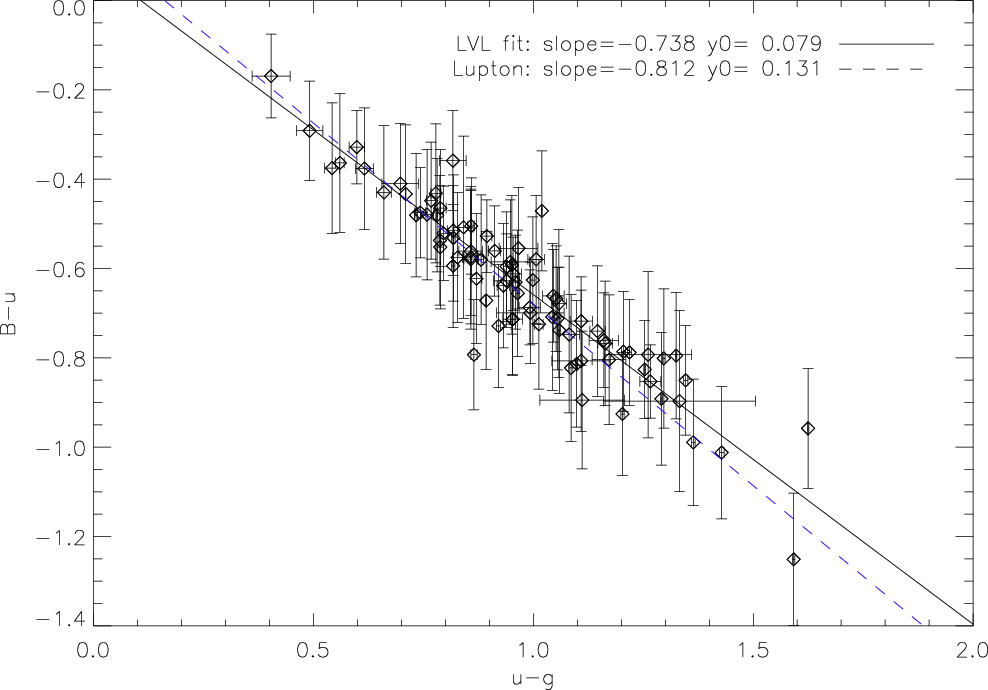 |
 |
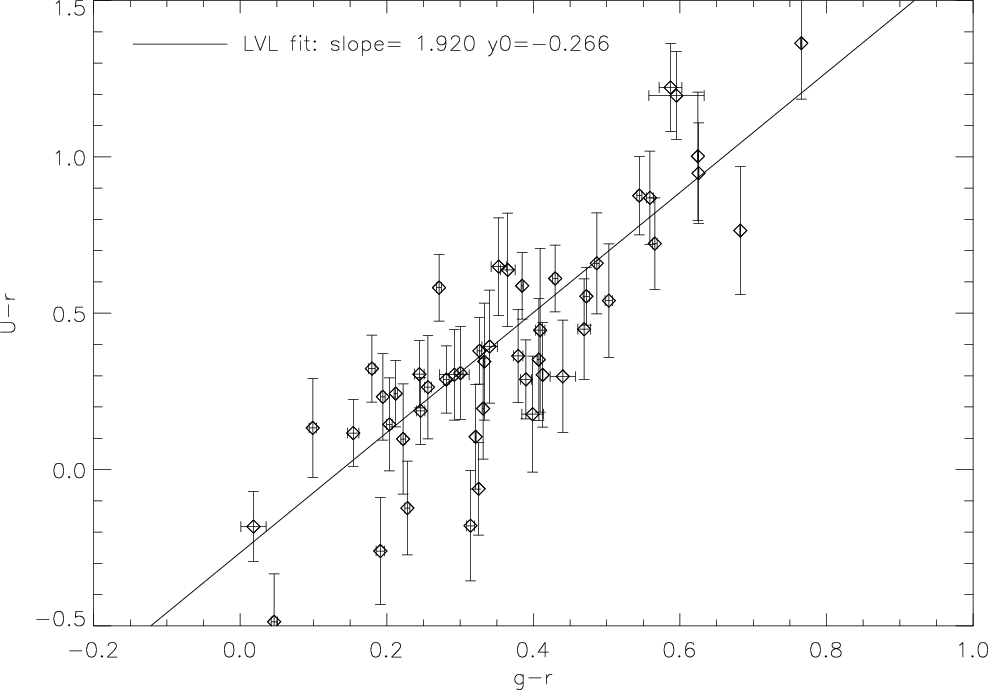 |
 |
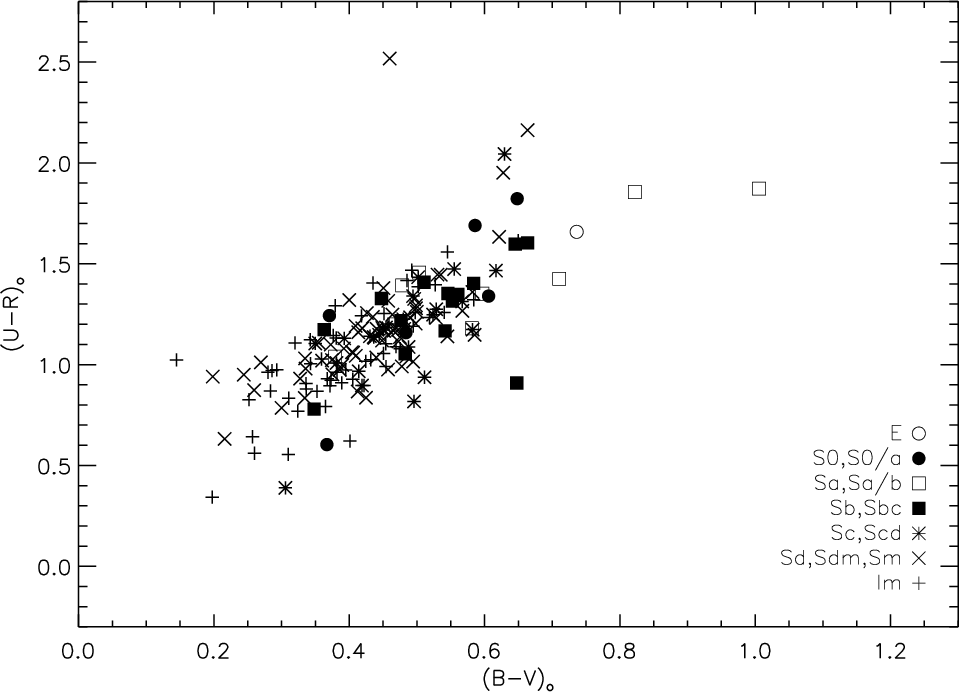 |
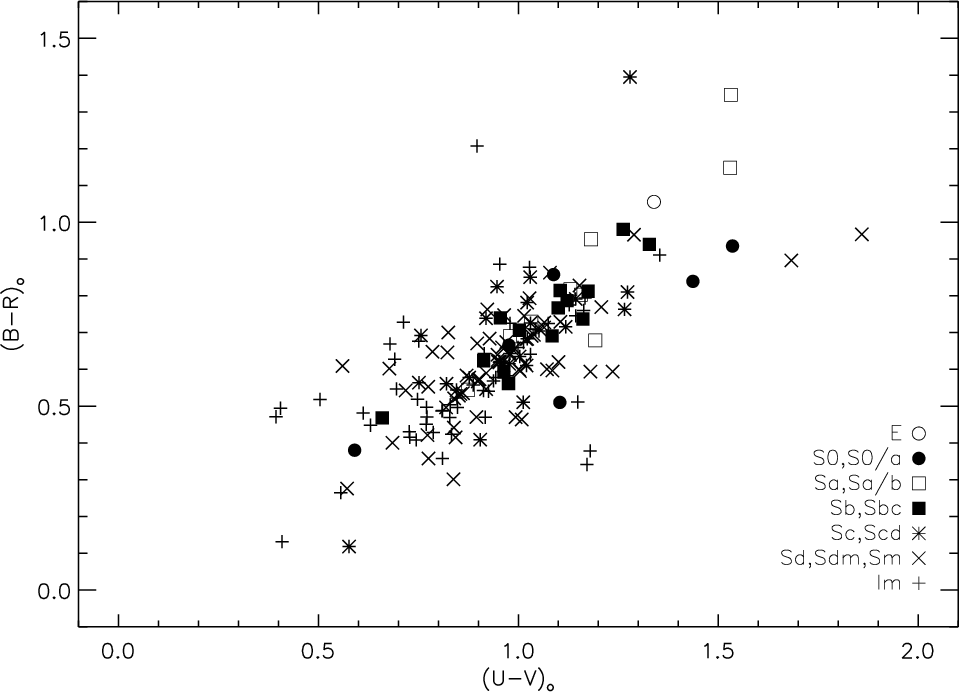 |
4/15/2013
Limiting magnitudes of all optical images
Here I have calculated the 5 sigma limiting magnitude for a point source (given the measured seeing of each image) of all optical images. The standard deviation of pixel values in the sky regions were multiplied them by 5 and by the area of the measured seeing (2*FWHM) of each image, and converted to a magnitude.
mag_lim = -2.5*log(5*stdsky*sqrt[pi*2*FWHM(radius)^2])+zpt
I plotted the entire sample as a histogram for each filter and measured the median and standard deviation:
U:23.5 +/- 0.79
B:24.4 +/- 0.79
V:23.8 +/- 0.71
R:23.3 +/- 0.78
u:22.4 +/- 0.27 sloan 95% completeness -> 22.0
g:23.5 +/- 0.24 sloan 95% completeness -> 22.2
r:23.1 +/- 0.21 sloan 95% completeness -> 22.2
i:22.6 +/- 0.20 sloan 95% completeness -> 21.3
z:21.2 +/- 0.24 sloan 95% completeness -> 20.5
Histograms:
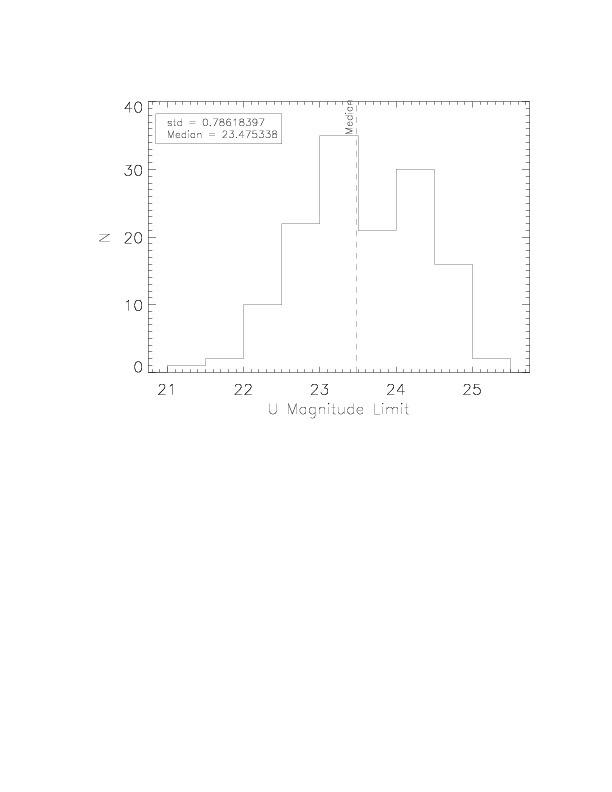 |
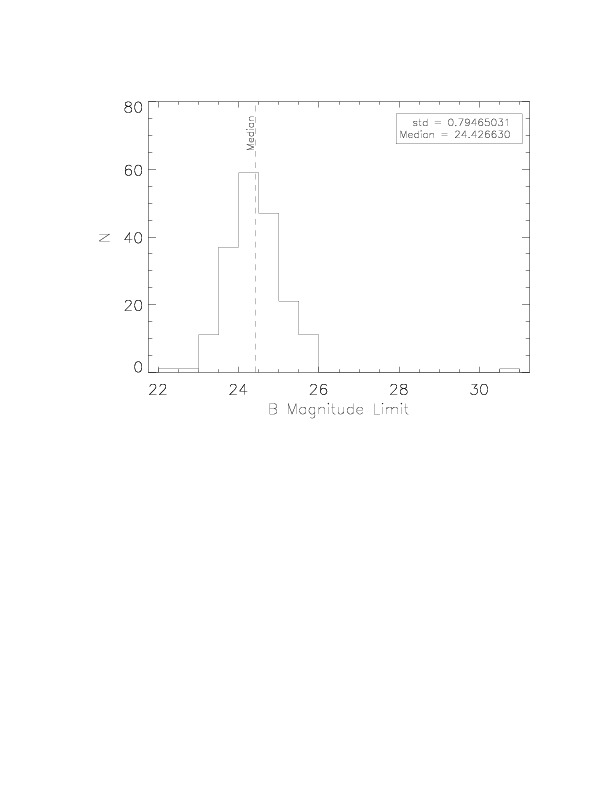 |
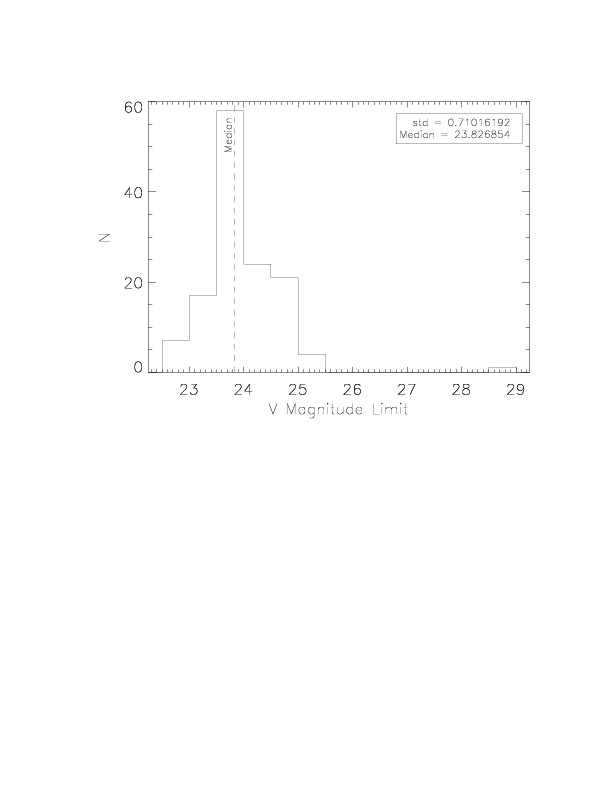 |
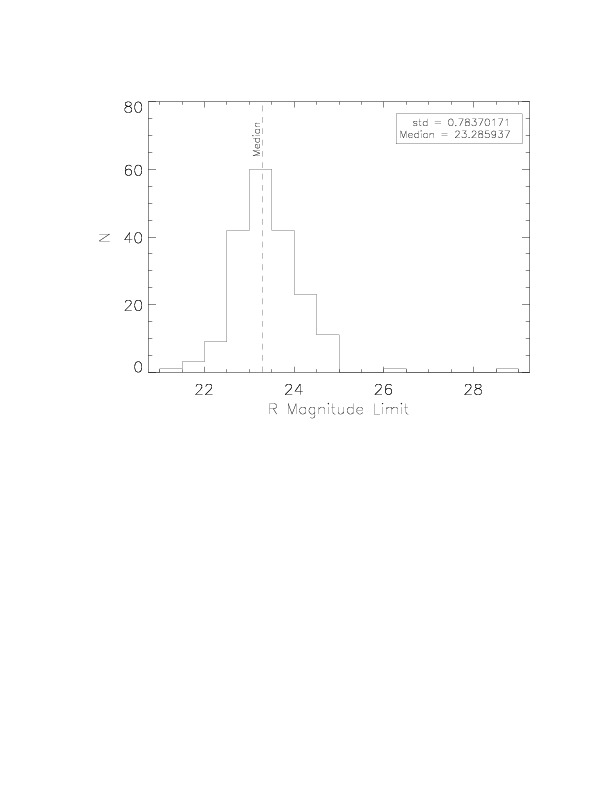 |
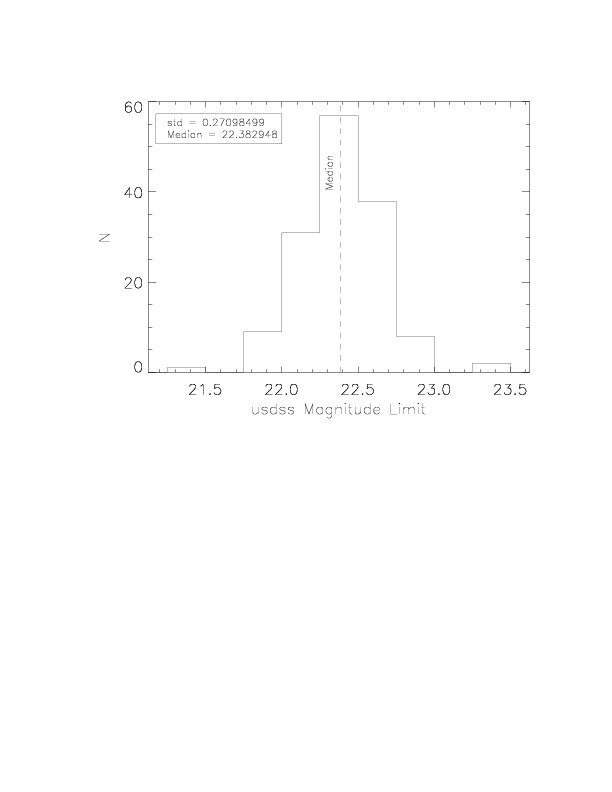 |
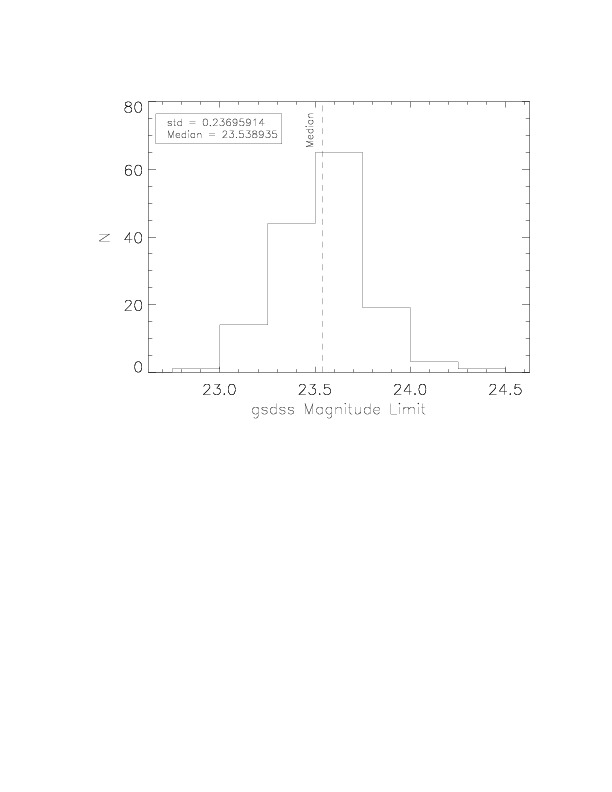 |
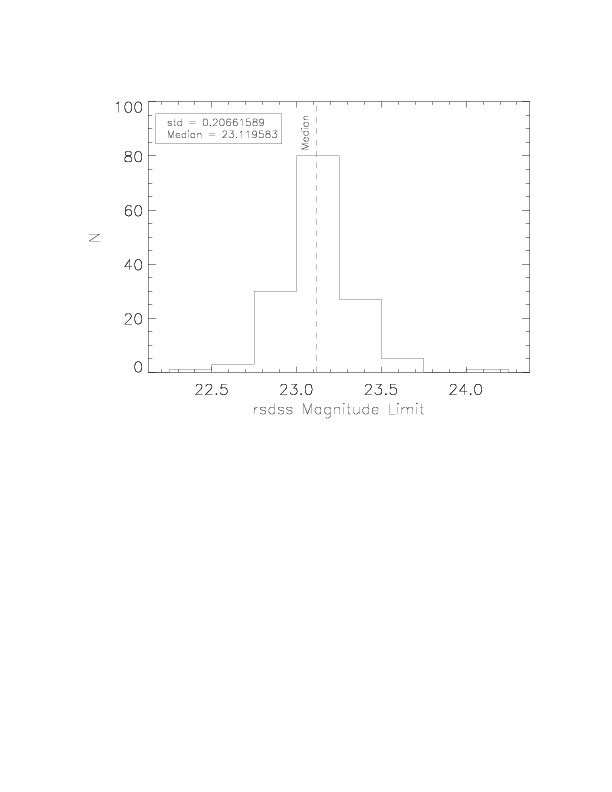 |
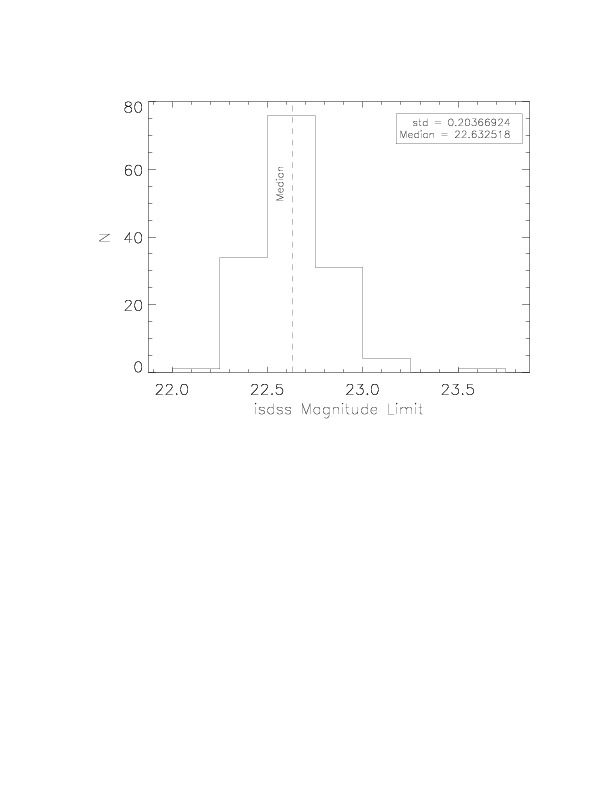 |
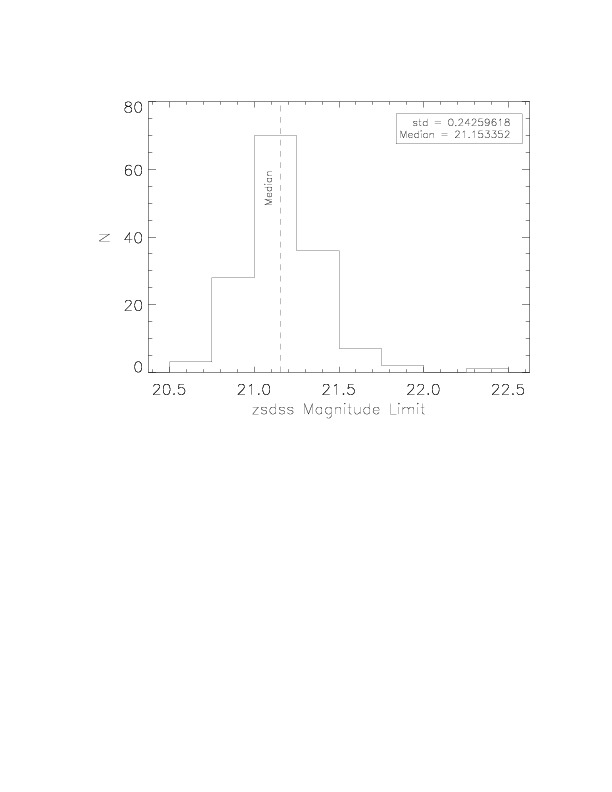 |
4/2/2013
Color Correction and Background regions comparisons
Color Corretions:
These are histograms for UBVR showing the difference between Mag (w/ cterm) - Mag (w/o cterm). The w/cterm magnitudes are calculated using the galaxies actual color and the w/o cterm magnitudes are using either my zeropoint or Liese's "all inclusive" zeropoint (assumption of dwarf colors). The standard deviations are pretty small (0.02-0.03) resulting in a small error. I have the code already set up to do the color corrections so we might as well leave them in.
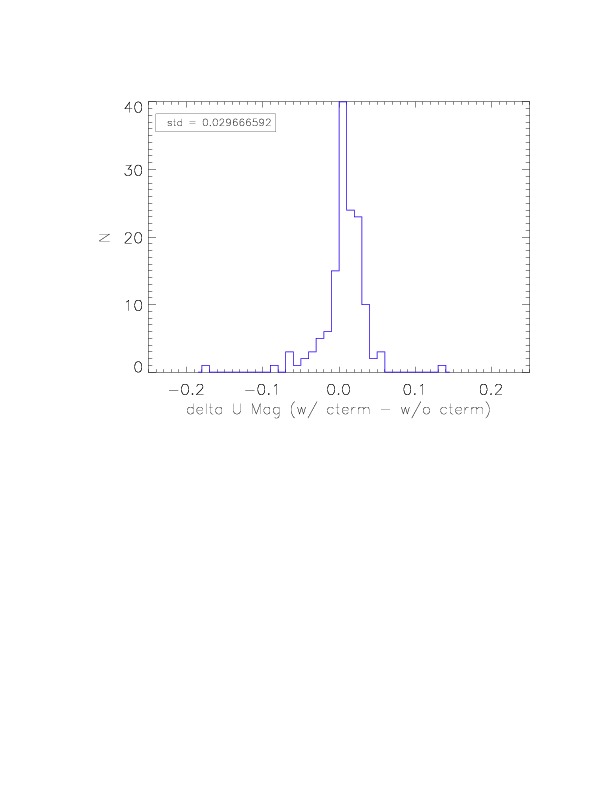 |
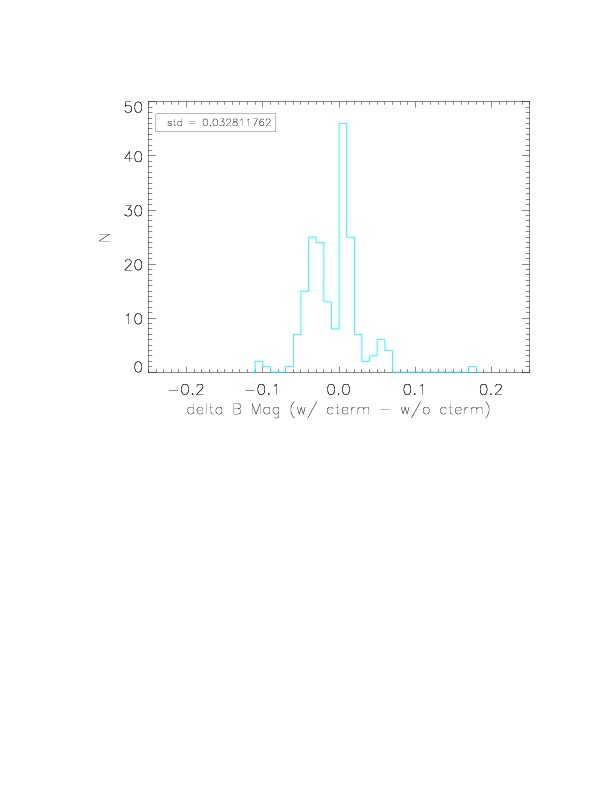 |
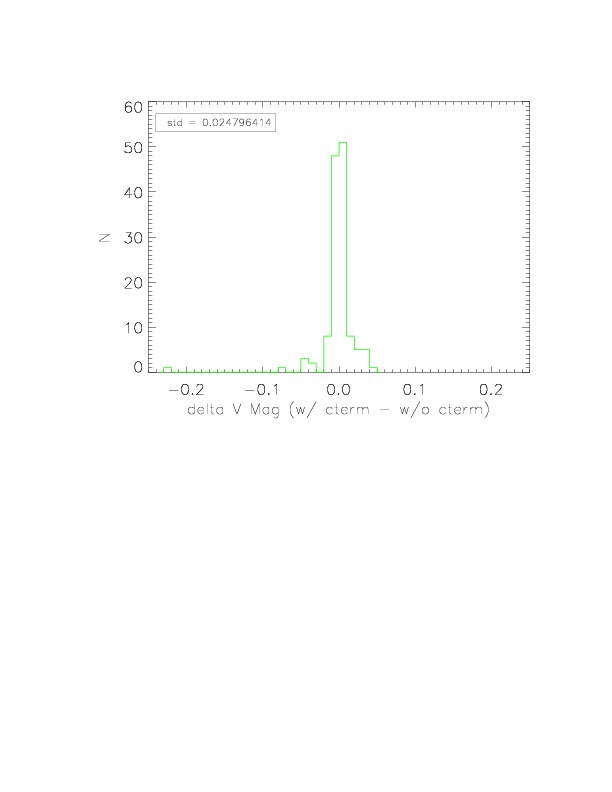 |
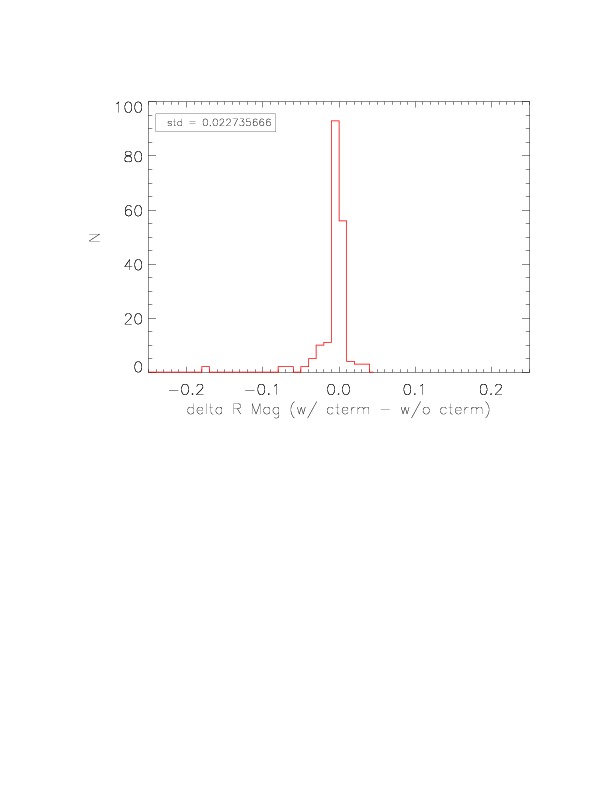 |
Background effects:
My initial background regions (old) were chosen to mimic an annulus, but I think they are a little too close to the galaxy (see pictures below). Comparing the magnitude difference between old and new background identifications for UA292 I found:
GALAXY 'UGCA292'
| FIlt | Dave_old_bkg | Ben | Dave_new_bkg |
| USDSS | 16.536718 | 16.0957 | 16.311227
|
| GSDSS | 16.006482 | 15.7935 | 15.845392
|
| RSDSS | 15.948595 | 15.7878 | 15.840617
|
| ISDSS | 16.044146 | 15.6790 | 15.752806
|
| ZSDSS | 16.084567 | 16.0730 | 15.710659
|
OLD: NEW:
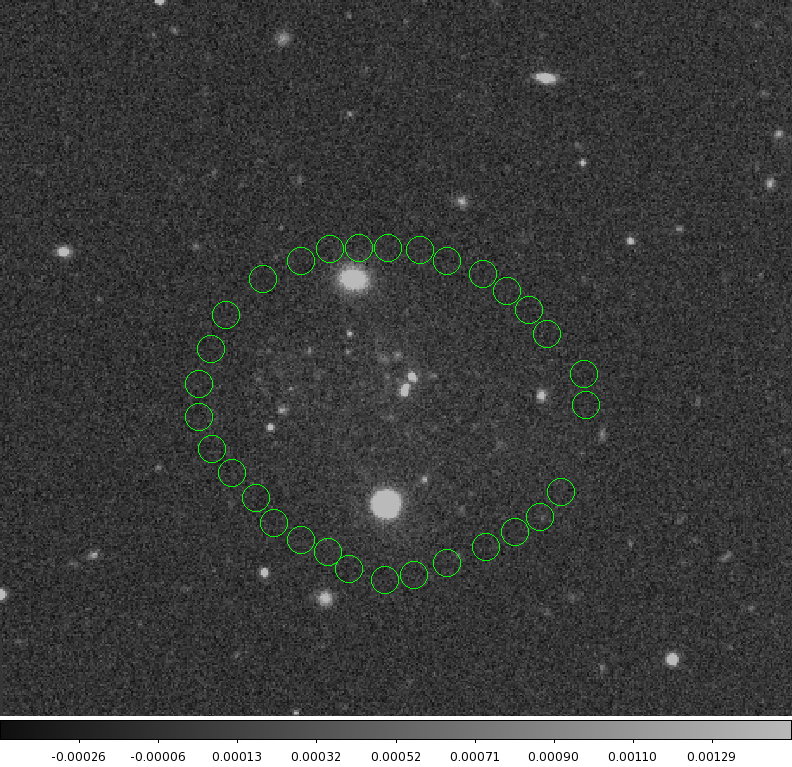 |
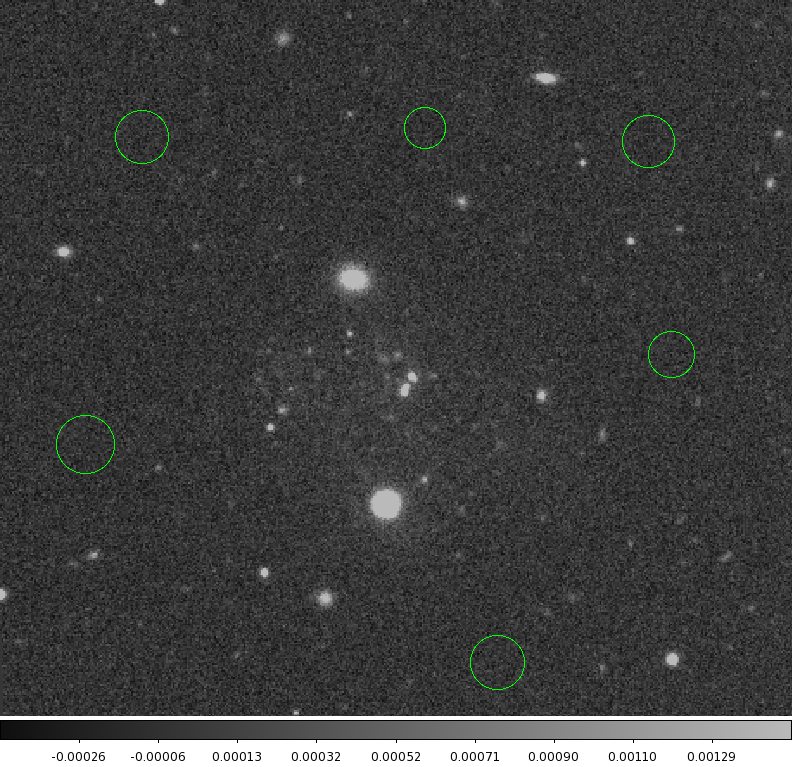 |
Realizing that the background can have a 0.3 mag effect in a moderately bad background ID, I re-identified all of the background regions using a similar method to the "new" method. Below are the differnece magnitude histograms between "old" and "new" background regions. Some of the galaxies with a large change in mag brought my mag in better agreement with Ben's mag(FM2000-1), however there are some which had the opposite reaction (HS98-117,UGC8833,UGC8837,KDG61).
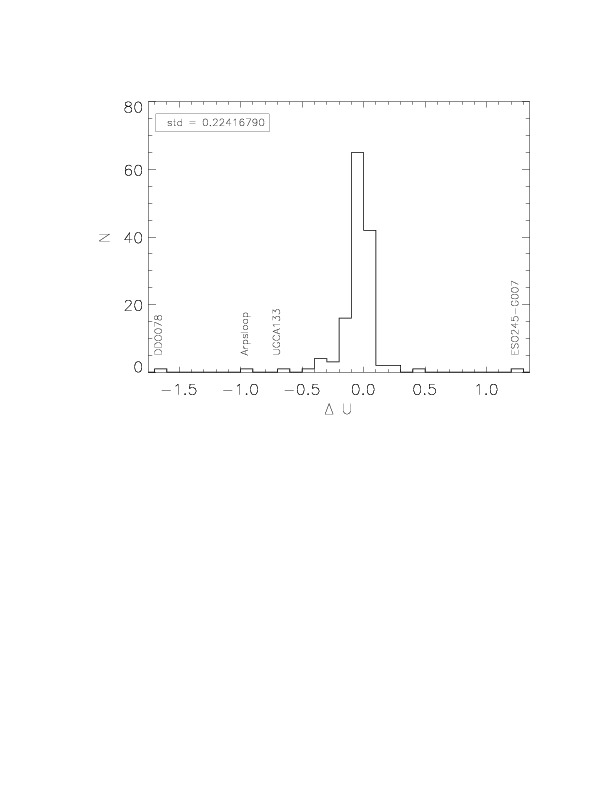 |
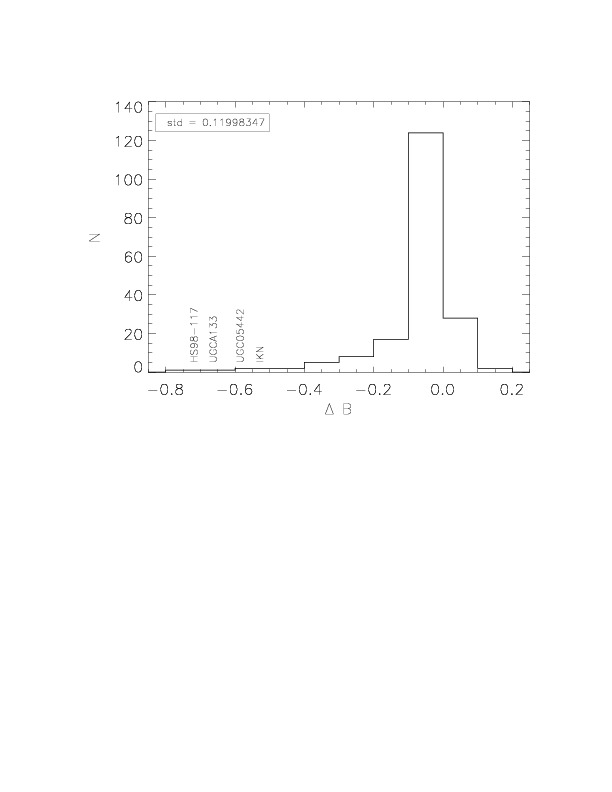 |
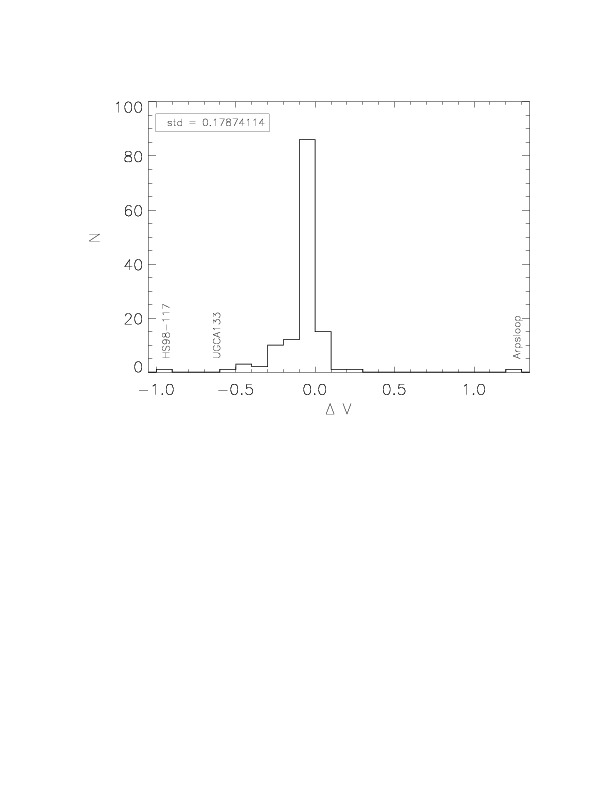 |
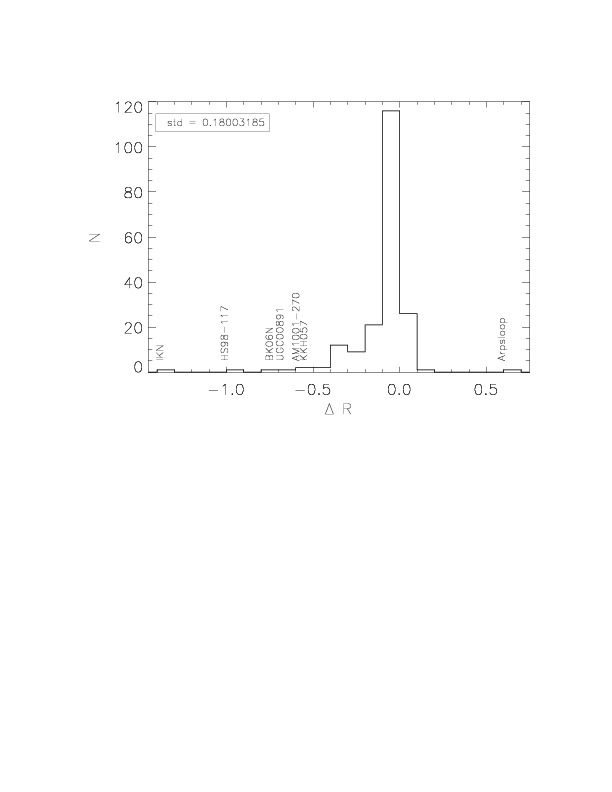 |
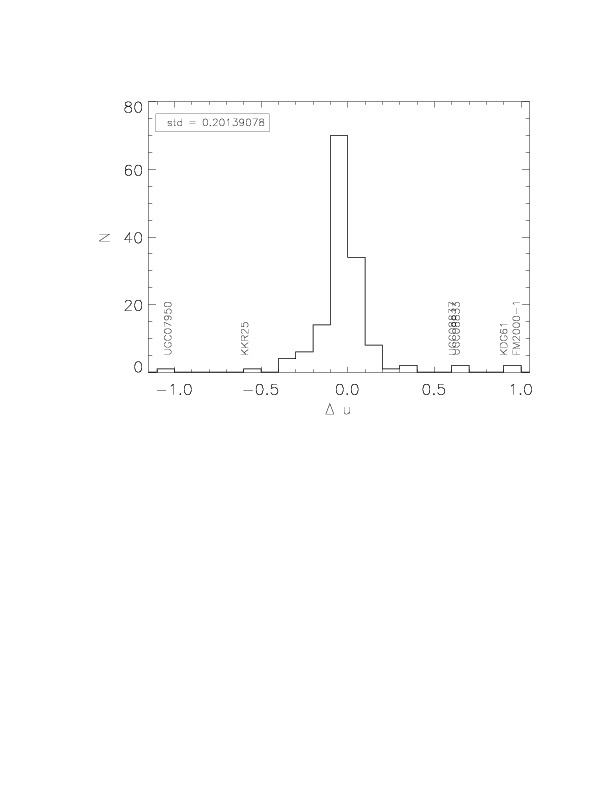 |
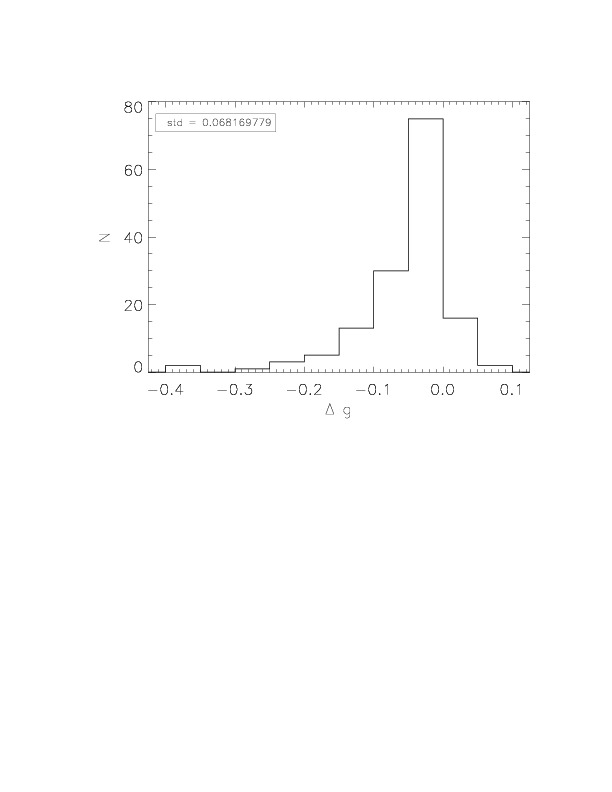 |
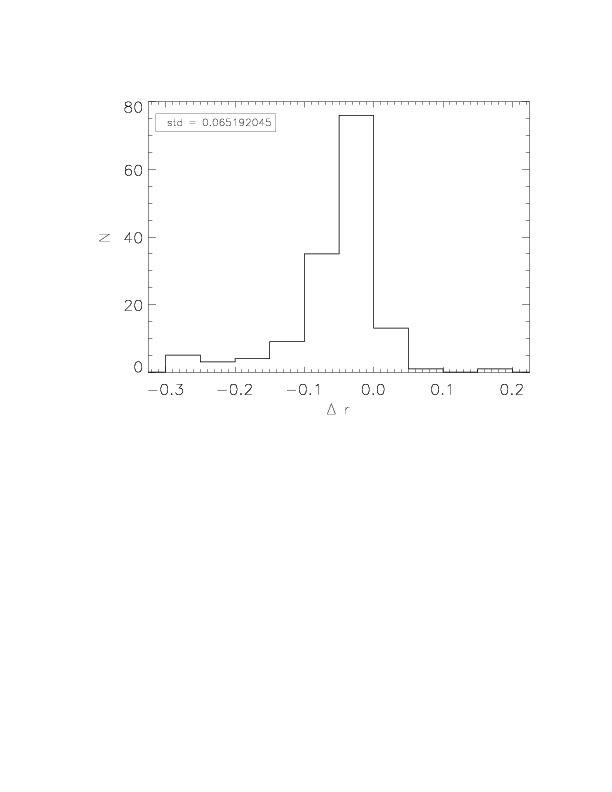 |
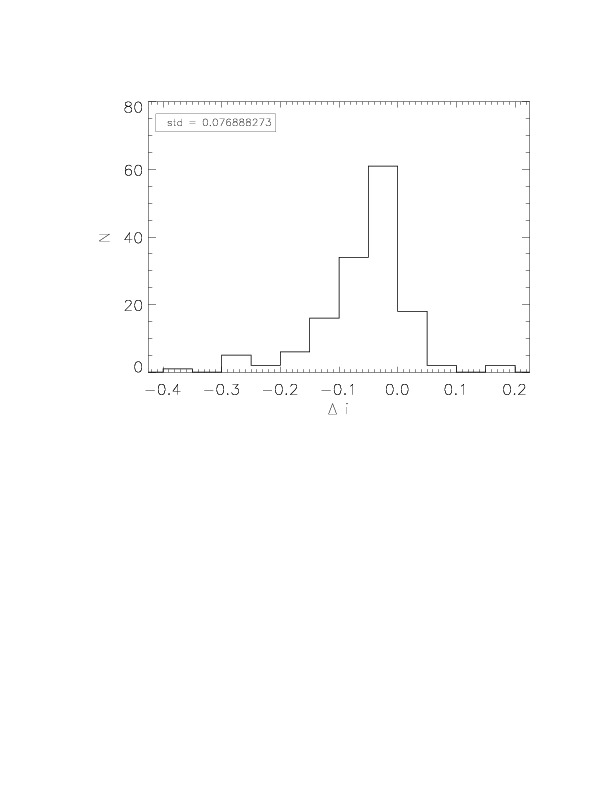 |
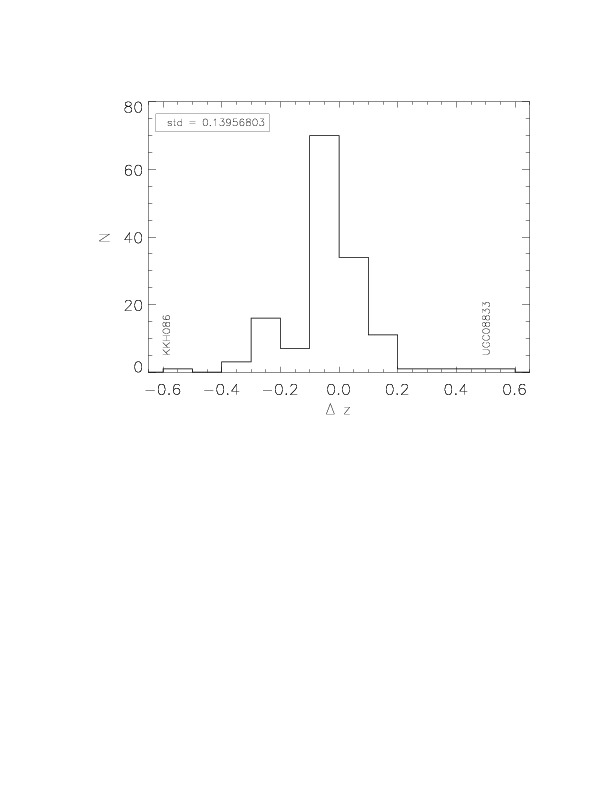 |
During the background re-identification process I noticed a handful of galaxies that had bad bright star edits. The biggest offenders are NGC3077, UGC7242, Arpsloop, BK06N, DDO78, IKN, NGC0045, UGC04278). Some of these were fixed by enlarging the star aperture, some I had to manually edit the image itself, and two (DDO78 and UGC7242) I have to look into more carefully. Some of these galaxies like UGC07242 would require an edit aperture that encompasses the entire galaxy and/or there are star forming regions (green circular regions within UGC7242, left picture) within the needed edit aperture:
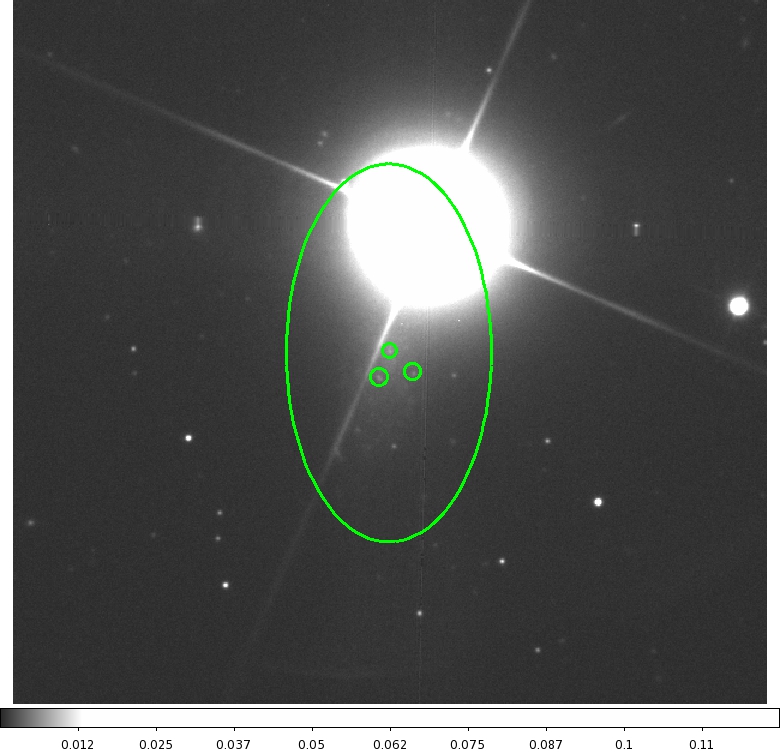 |
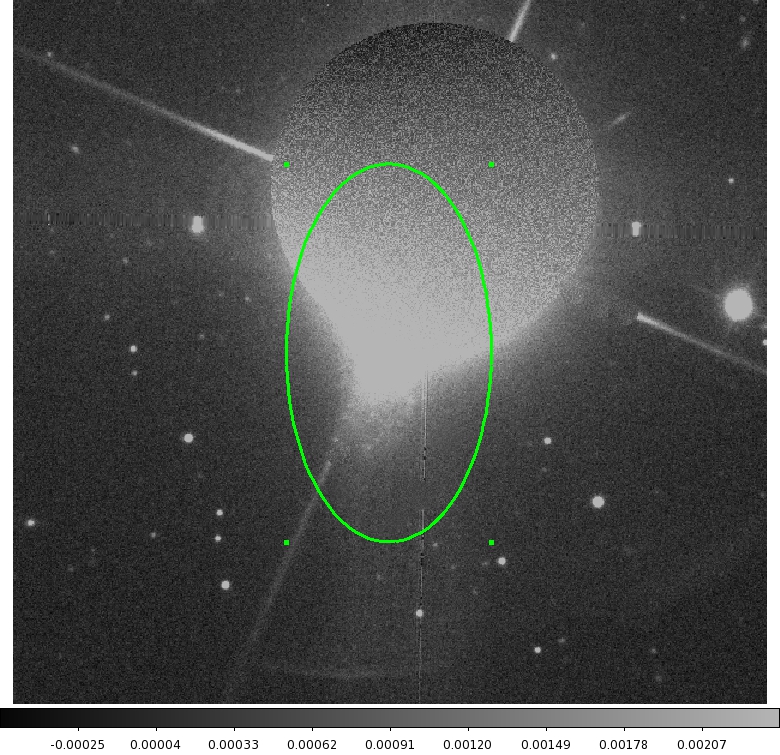 |
I was able to save as much of the galaxy as I could with Arpsloop by manually editing the bright star (below). The circular bold regions in the right-hand picture are star-forming regions that would have been edited with an edit aperture large enough to remove the bright star. I am having a hard time doing the same with DDO78 and UGC7242. FYI, UGC7242 is by far the largest outlier in the comparison plots below.
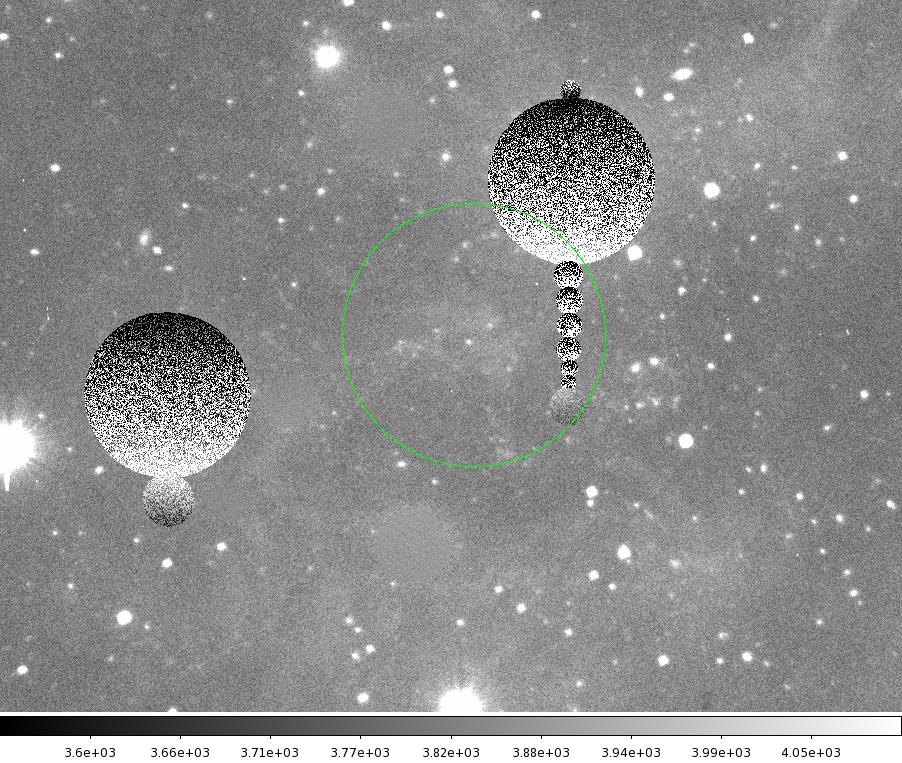 |
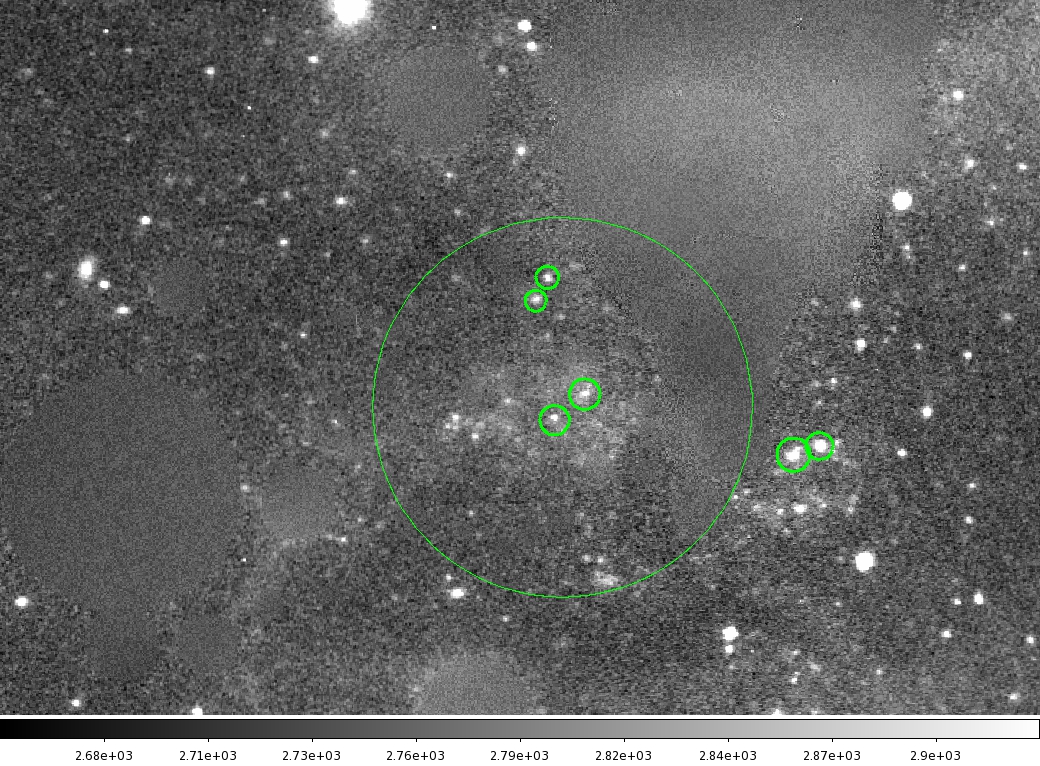 |
Below are the latest comparison graphs of my mags vs Ben and Liese's mags. Some of these I am convinced the discrepancy is due to nearby bright stars (e.g. UGC7242), but I am not sure about some of the outliers that lie above the one-to-one line in the residual plot.
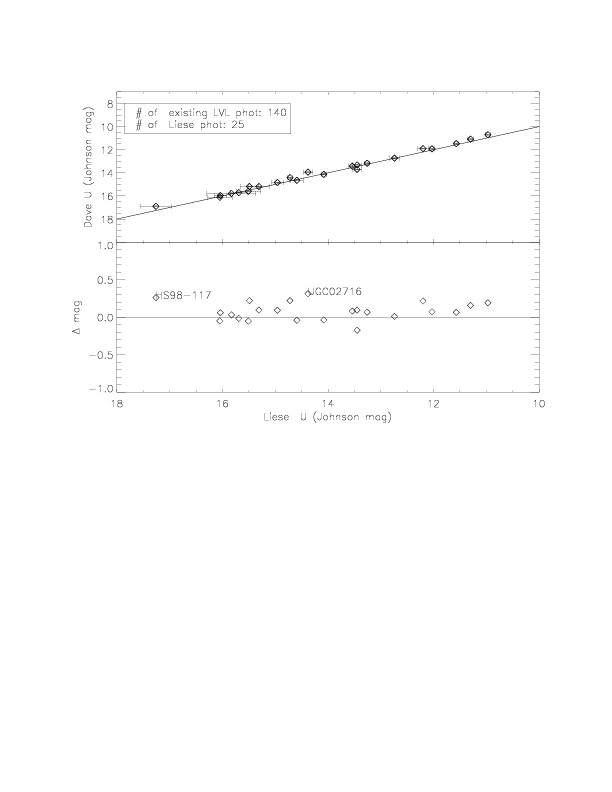 |
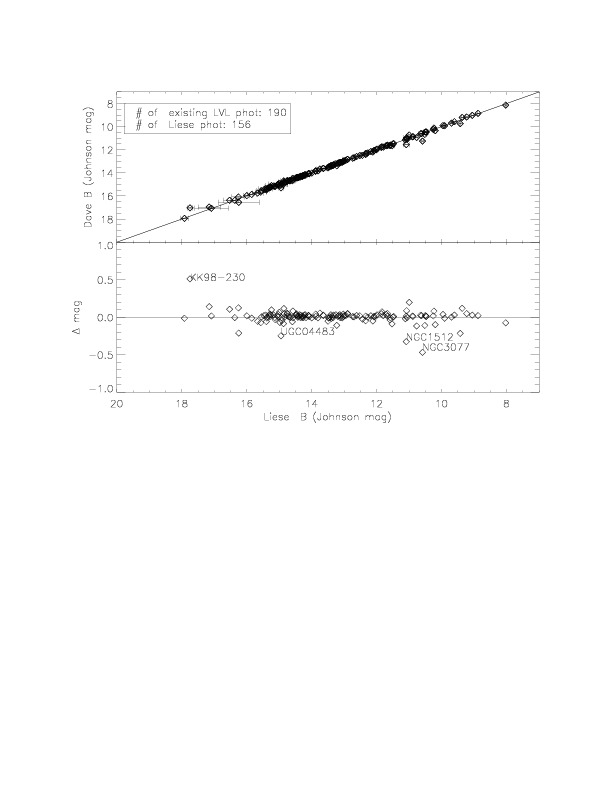 |
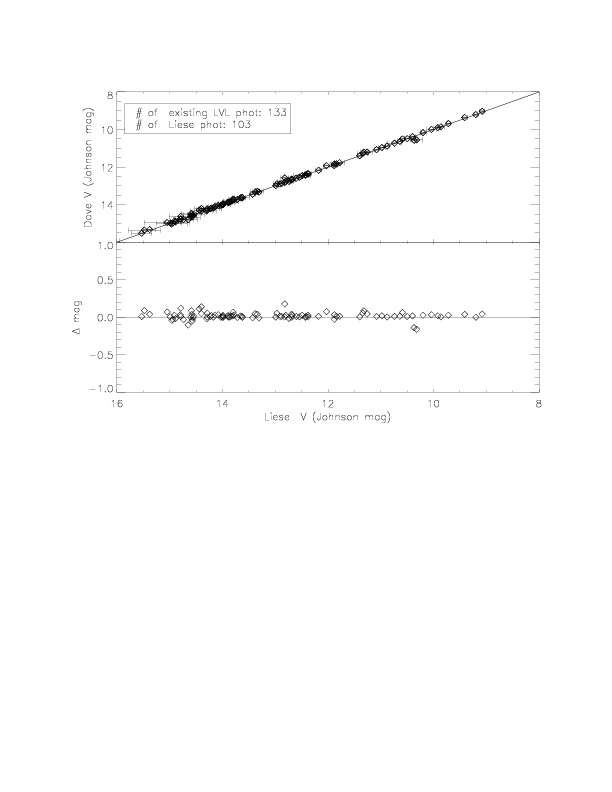 |
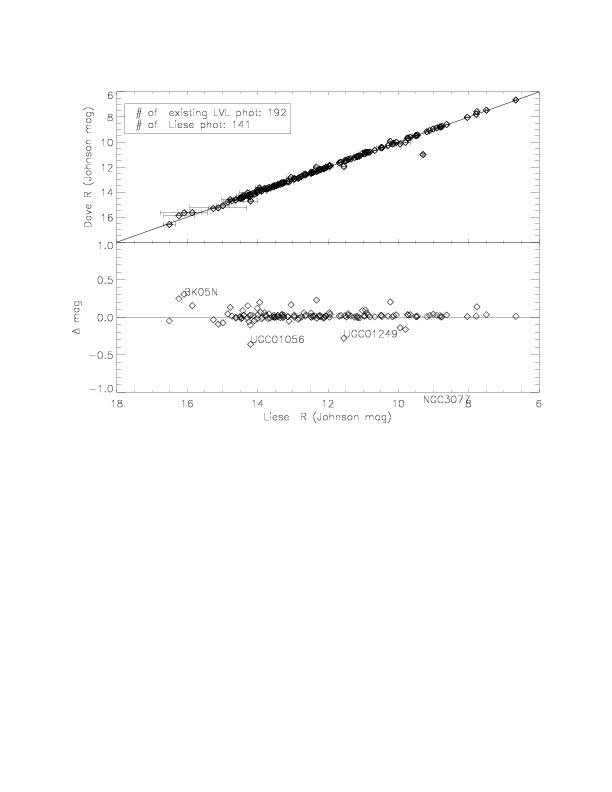 |
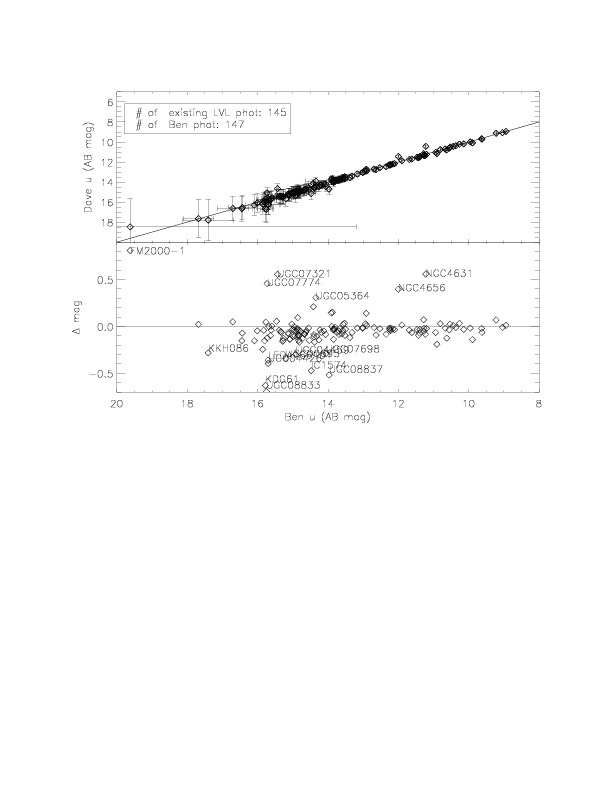 |
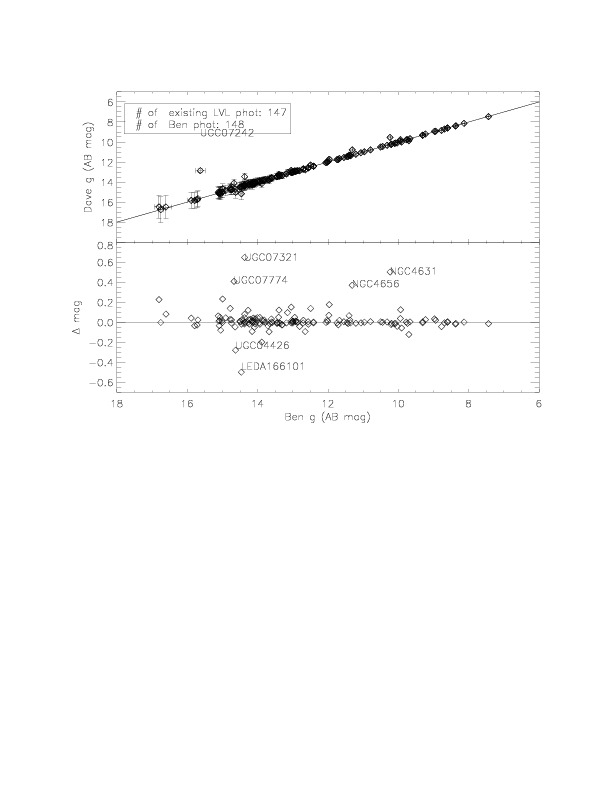 |
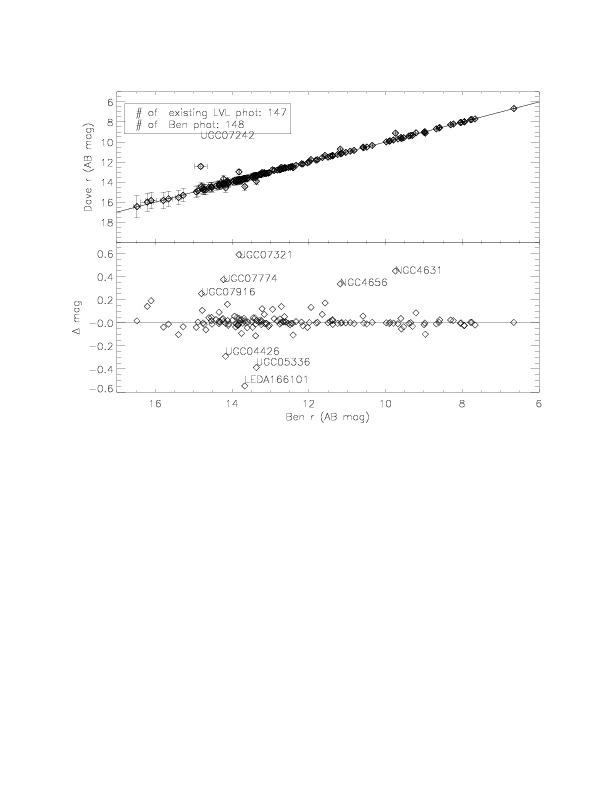 |
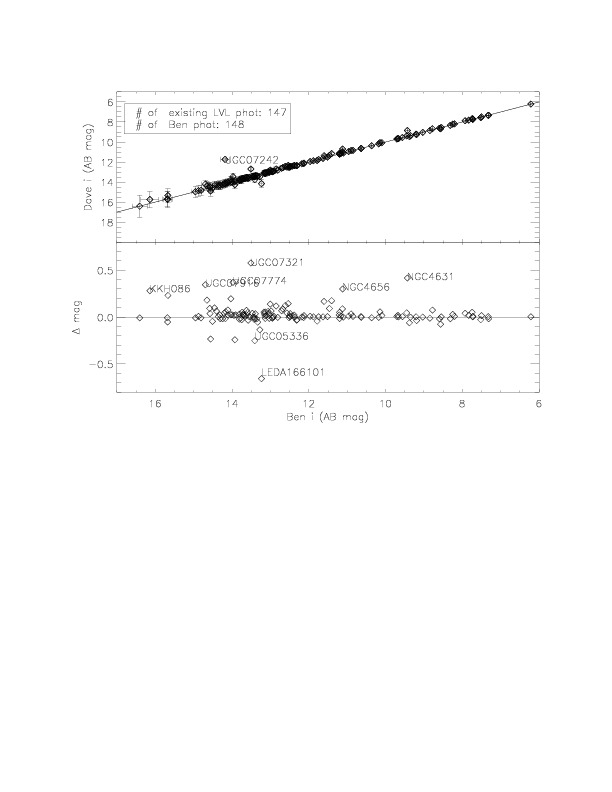 |
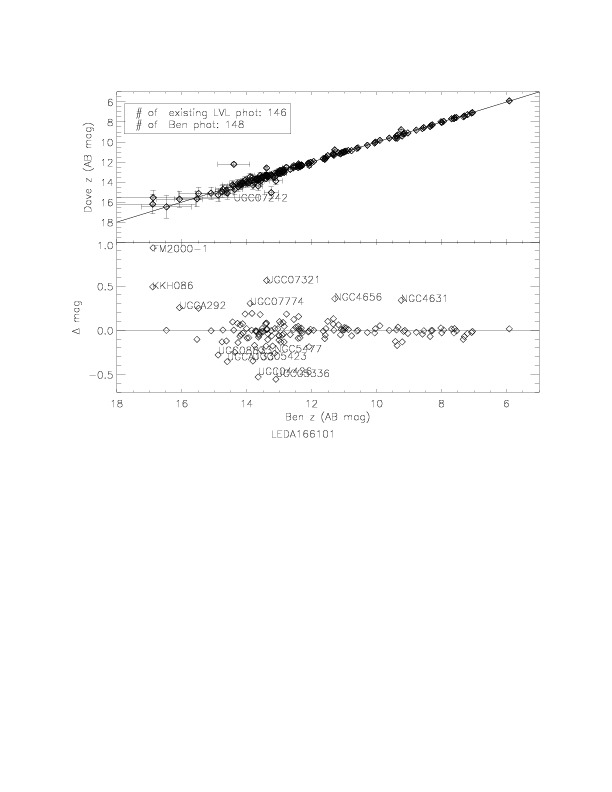 |
I have taken the outliers in the photometry comparison graphs (just above) and have star edited them using Danny's original regions and made difference (Danny vs. my extra editing) histograms to quantify how much error star editing can incorporate. It looks like star editing can account for UGC07242,NGC3077, FM2000-1, UGC05336, and
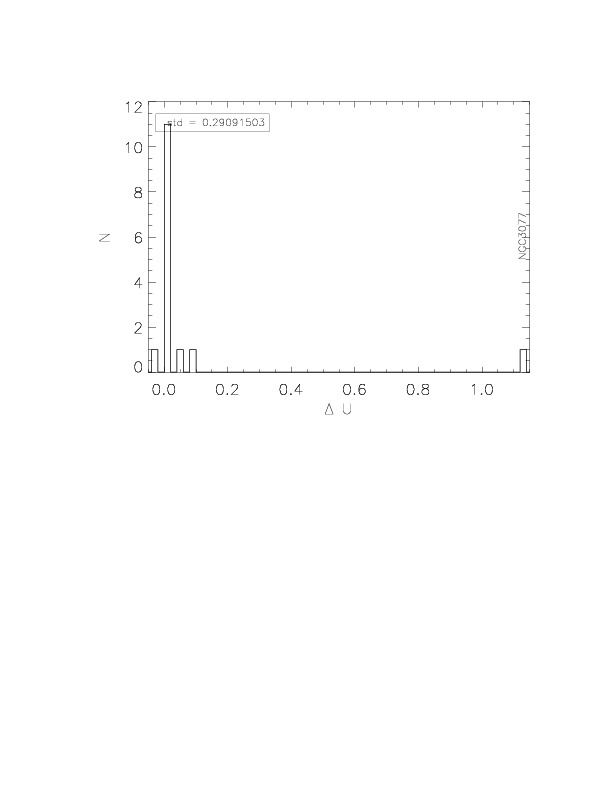 |
 |
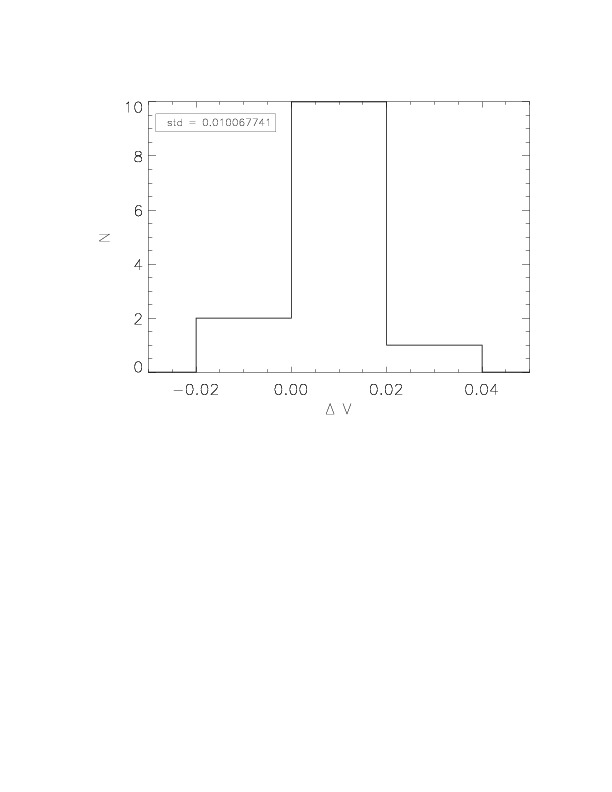 |
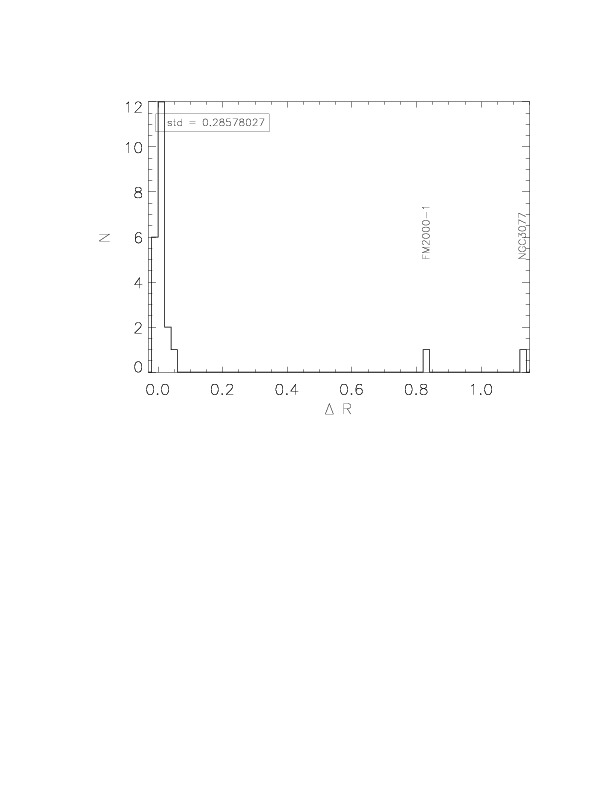 |
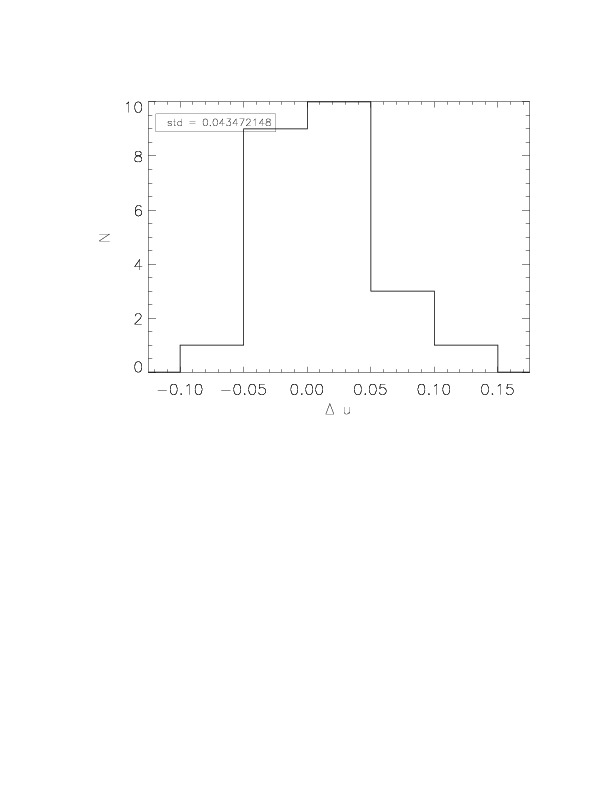 |
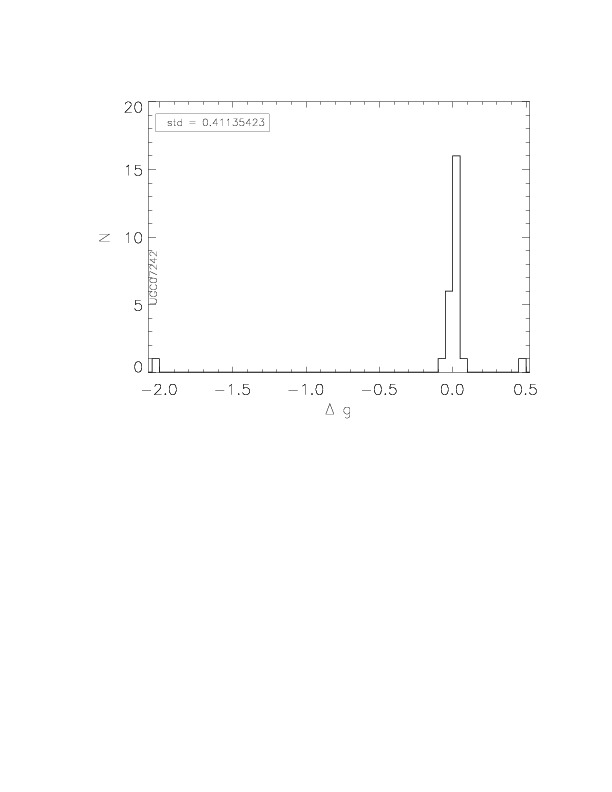 |
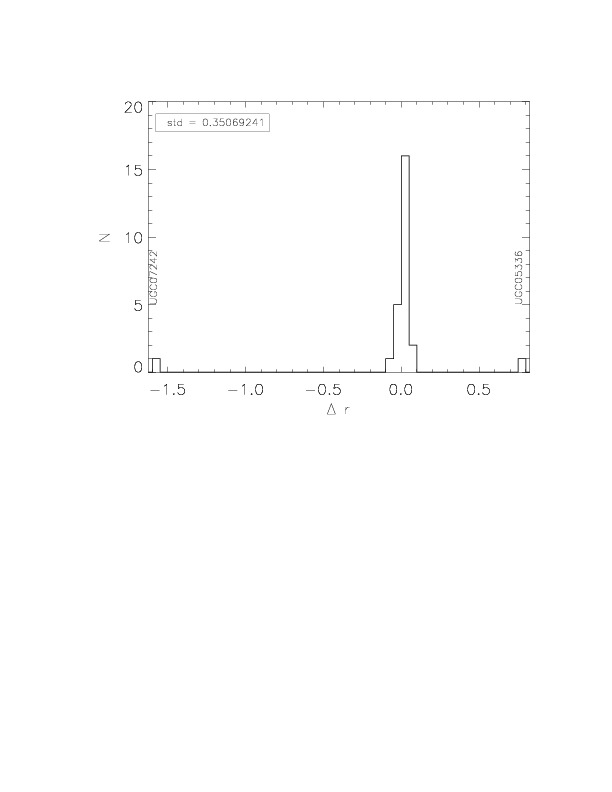 |
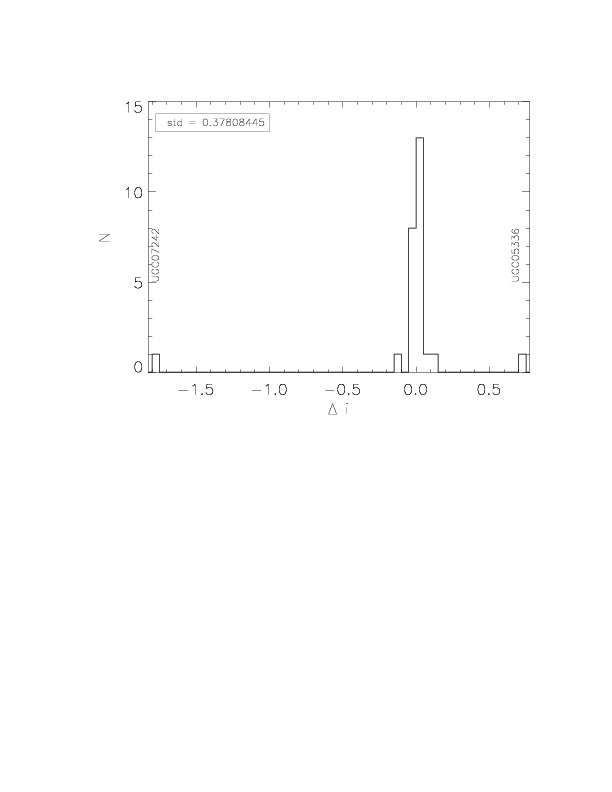 |
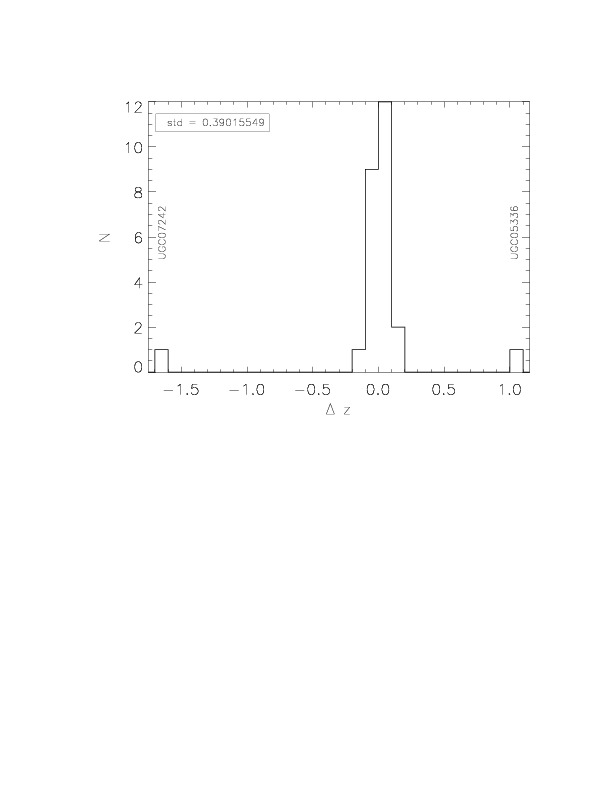 |
6/12/2012

































































